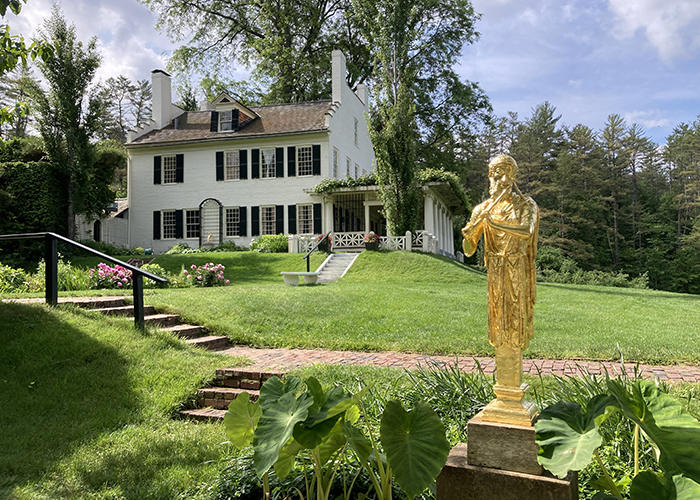 Previous Day |
Hartford, VT → Cornish, NH → Woodstock, VT → Hartford, VT 66.5 mi (107.0 km) |
 Next Day |
Top o’ the Northeastern morning, everyone!
Today, I’m hopping back and forth across state lines, much like I did in the Mississippi Delta, only much further north! I’ll be visiting two national park sites and a couple other neat spots along the way, starting in the Granite State of New Hampshire at Saint-Gaudens National Historical Park! Upgraded from a national historical site to a national historical park on March 12, 2019, this place celebrates the life and artwork of sculptor, Augustus Saint-Gaudens!
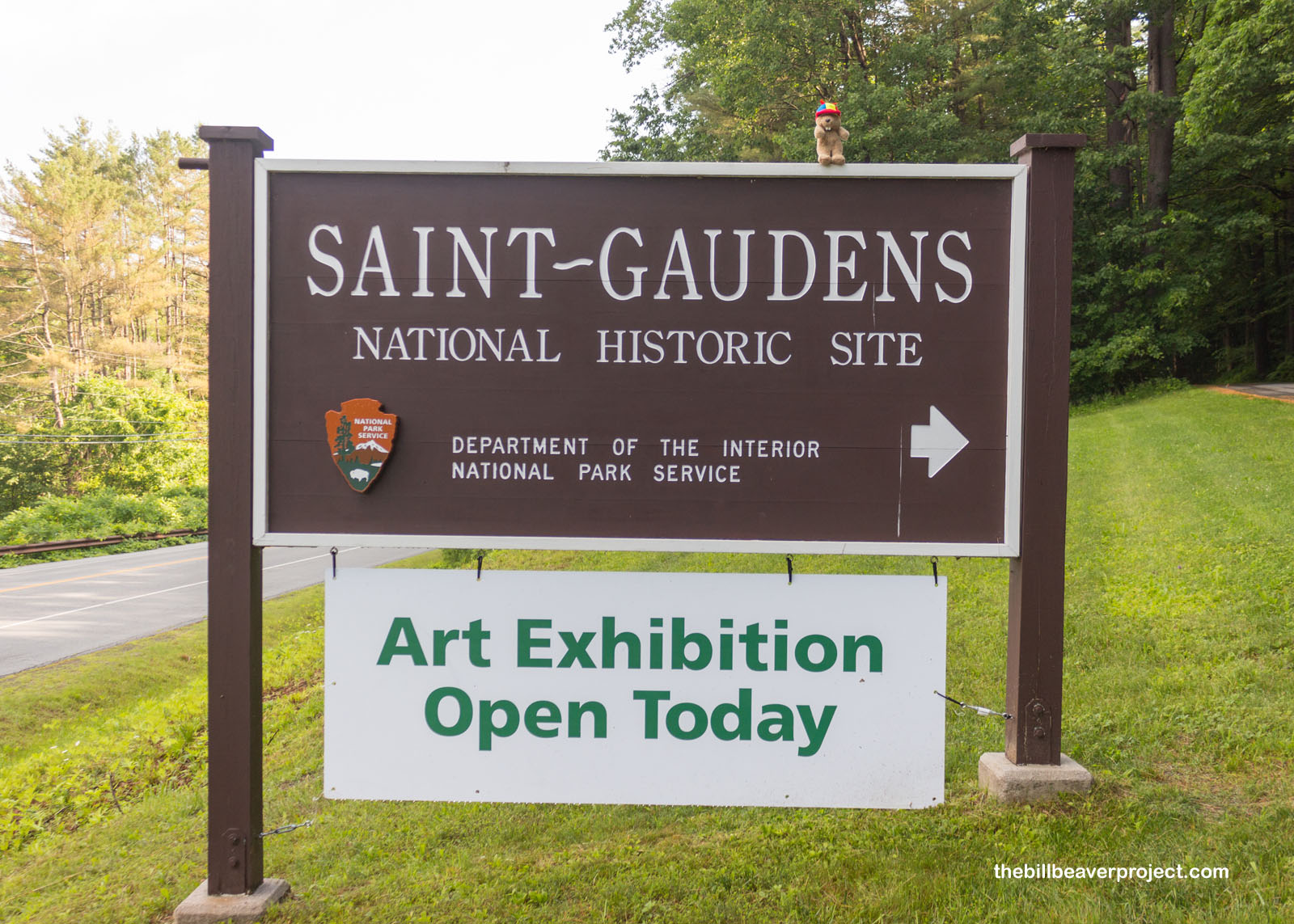 |
Though he was born in Ireland and educated in France, Mr. Saint-Gaudens depicted American characters with Greco-Roman inspiration to create a uniquely American sculpting style! Famously, he sculpted monuments to Admiral David G. Farragut and General William T. Sherman in New York then set up an art colony here in Cornish, New Hampshire in 1885! From this home base, he continued sculpting such famous bronze works as The Standing Lincoln, which was re-cast several times to be gifted to places like Britain and Mexico!
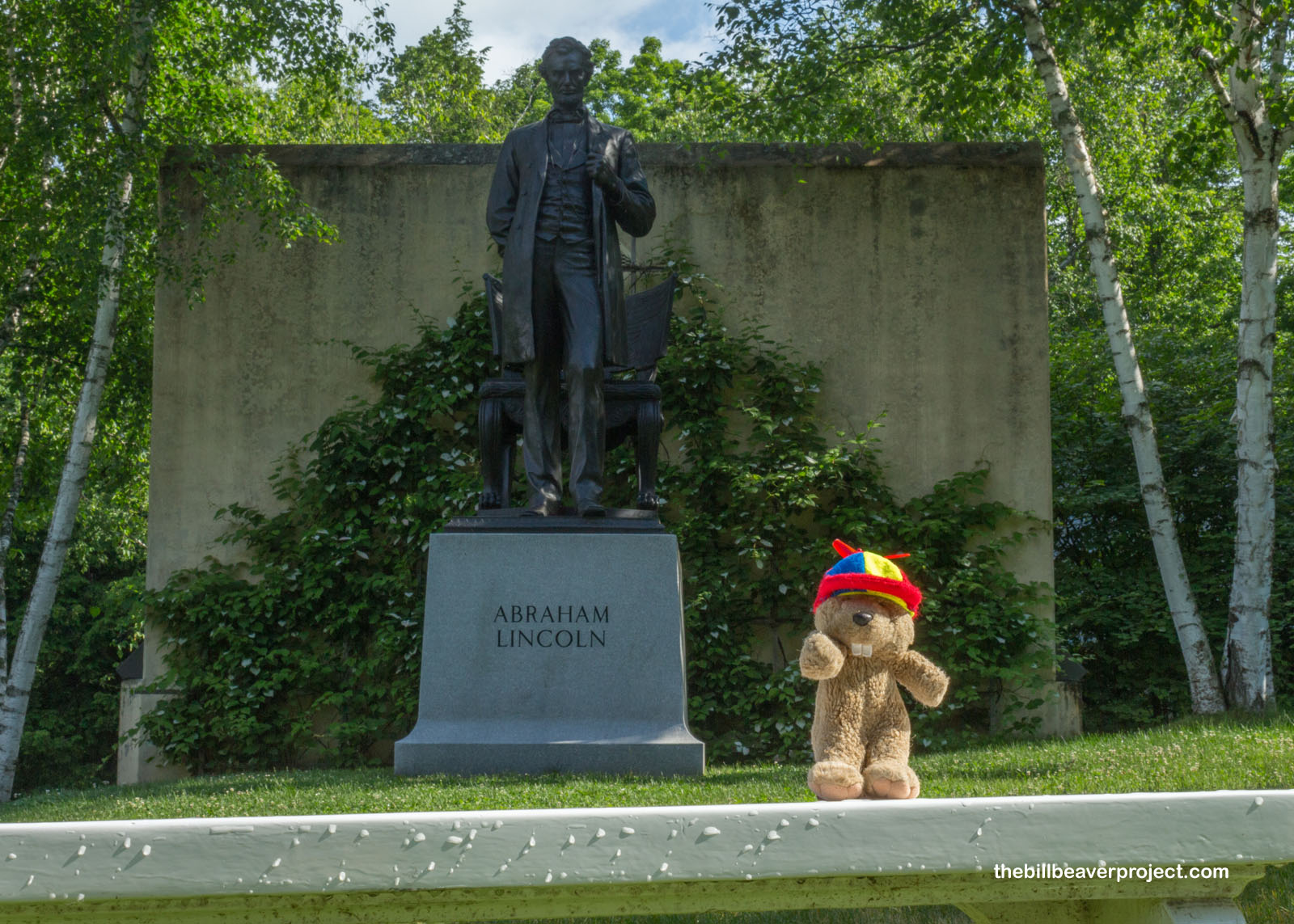 |
Similarly recast in 1994, but with its original base, is Mr. Saint-Gaudens’ statue of Admiral Farragut, his first public commission, which gave him the money he needed to marry Augusta Homer! She helped sculpt the admiral’s clothes while they shared a studio in Paris, though this was the only time she physically worked on one of his sculptures!
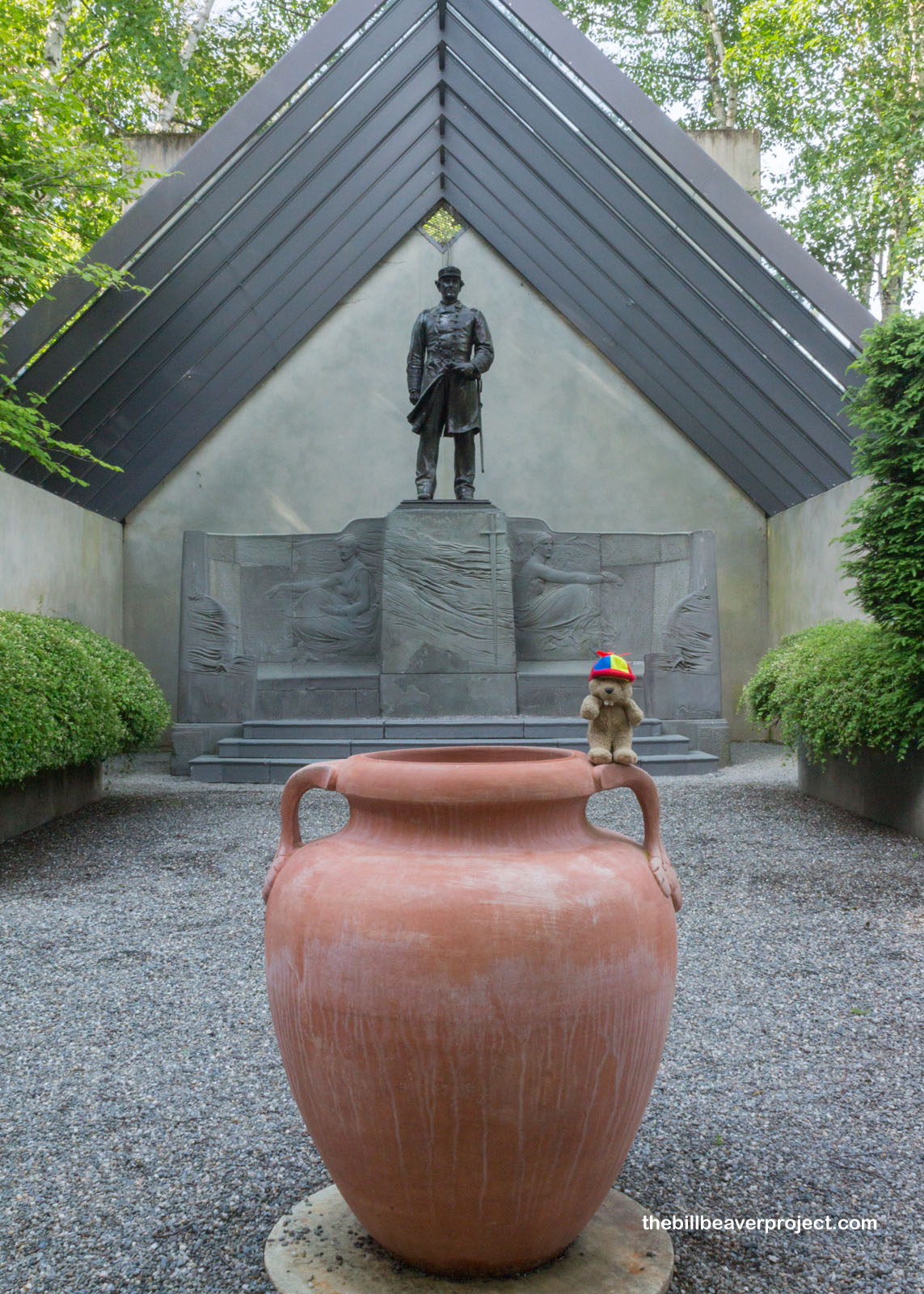 |
This sculpture faced into the tranquil Atrium, which featured turtle fountains and a golden relief called Amor Caritas! Surrounding this fountain were classically-inspired columns and more sculpted reliefs of members the Saint-Gaudens family! This is also the only structure at the park that was built by the Saint-Gaudens Memorial, making it one of America’s earliest spaces dedicated to the legacy of a local artist!
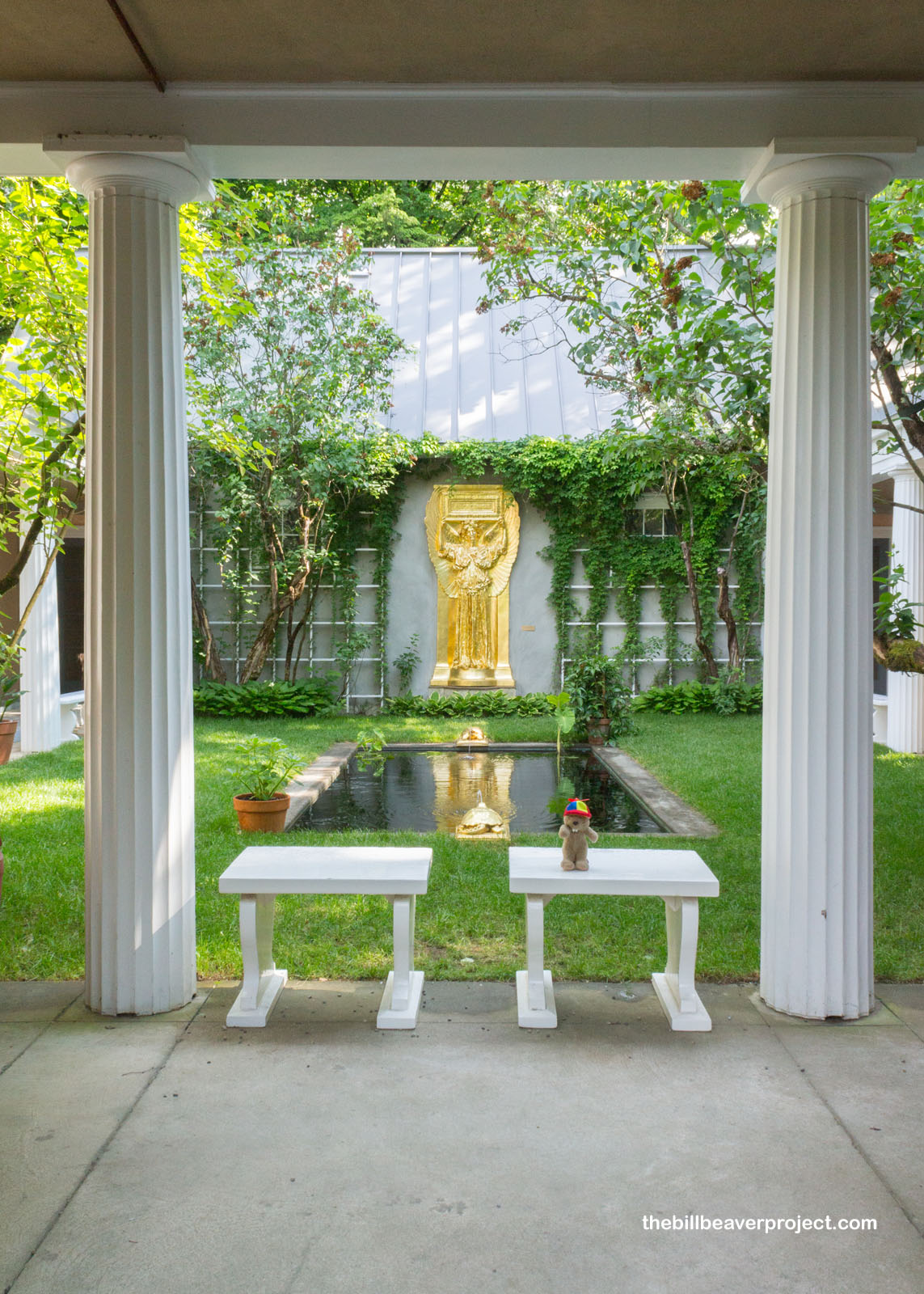 |
The rest of the structures here at the estate known as Aspet, were lived and worked in by Mr. Saint-Gaudens himself! Originally built as an inn, this was supposed to be a summer home, which the sculptor thought was very ominous at first sight. What he might have been sensing, though, was the future cancer diagnosis that would made this the family’s permanent home in 1900. Aspet was the name of the town in France where Mr. Saint-Gaudens’ father was born!
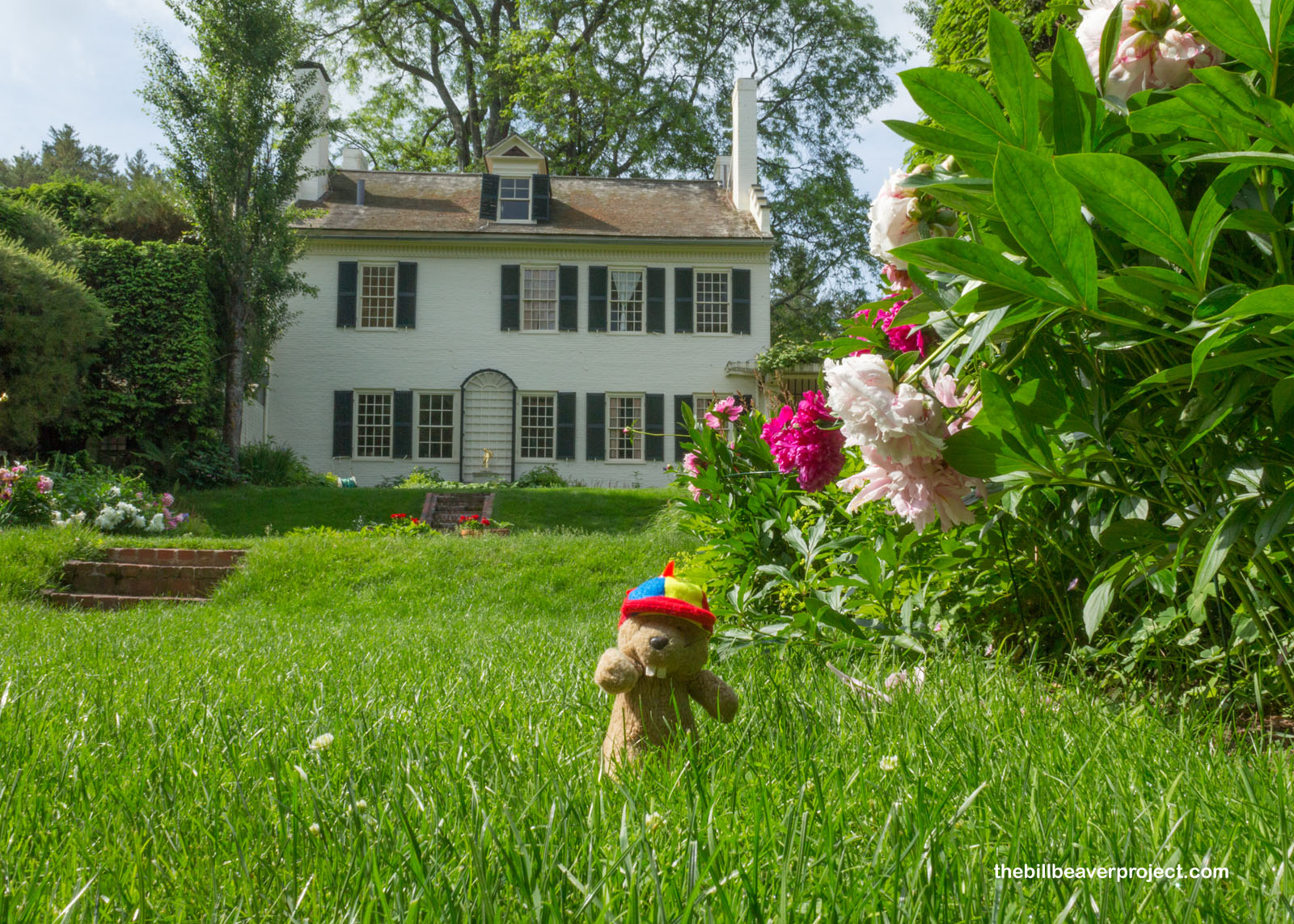 |
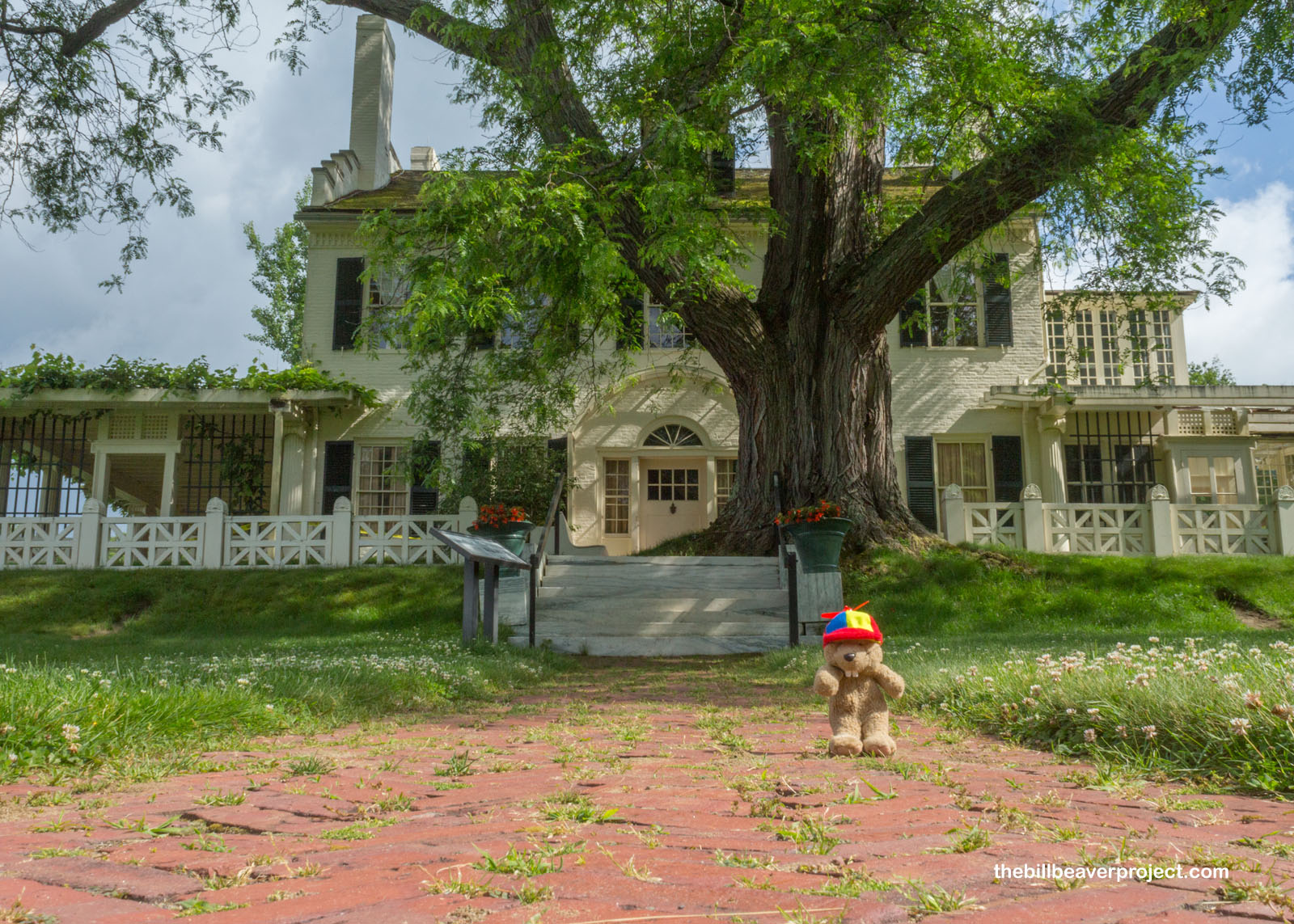 |
A stone’s throw from their home was the Little Studio, which did not look so little to me! Originally, this was just a barn where the Standing Lincoln was designed, but in 1904, architect, George Fletcher Babb, came on board to transform this barn into a studio, alongside the larger Studio of the Caryatids! When an electrical fire took out the larger studio, this one, which features a Greco-Roman portico and colored replica of the friezes of the Parthenon became the main center of creativity!
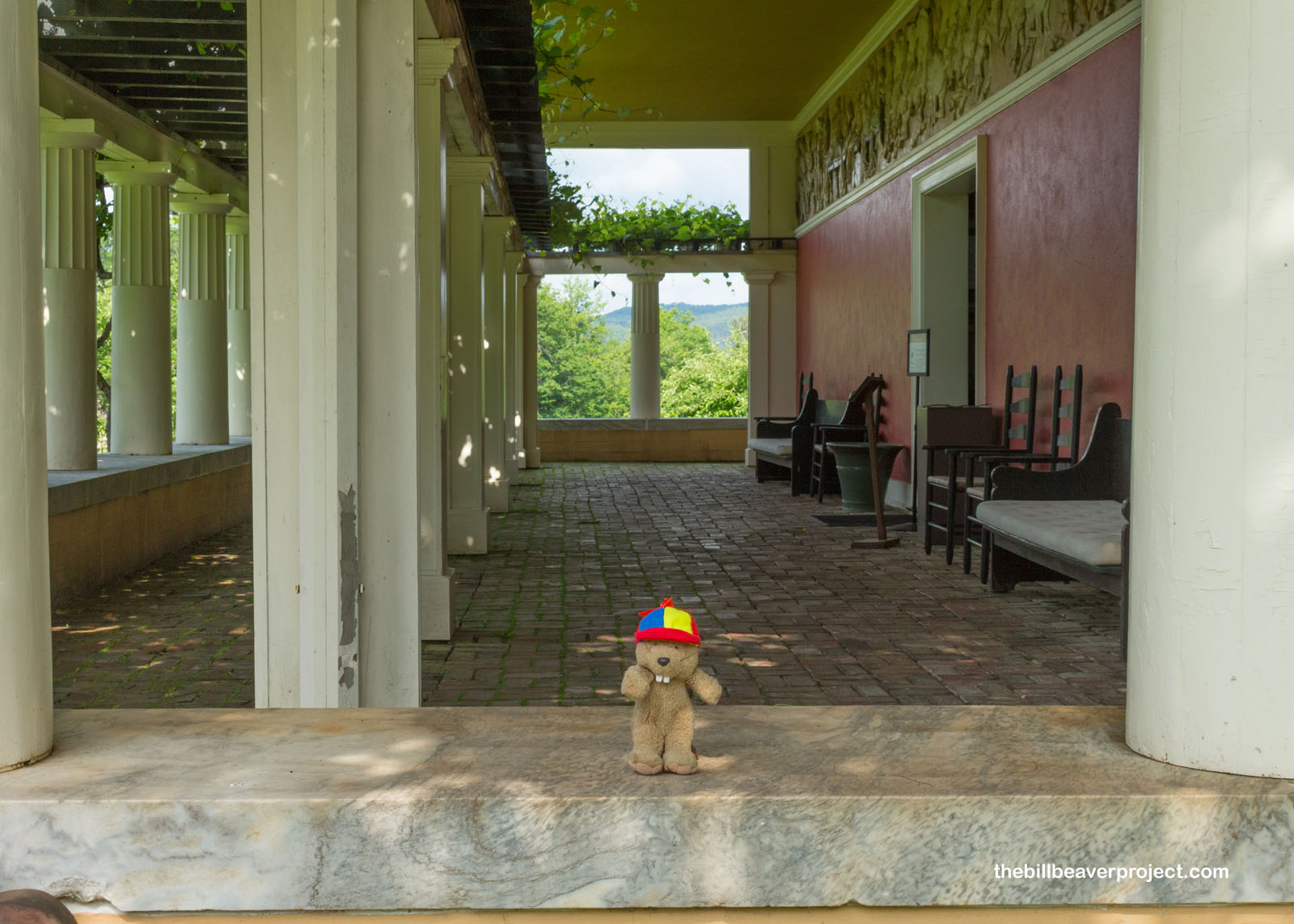 |
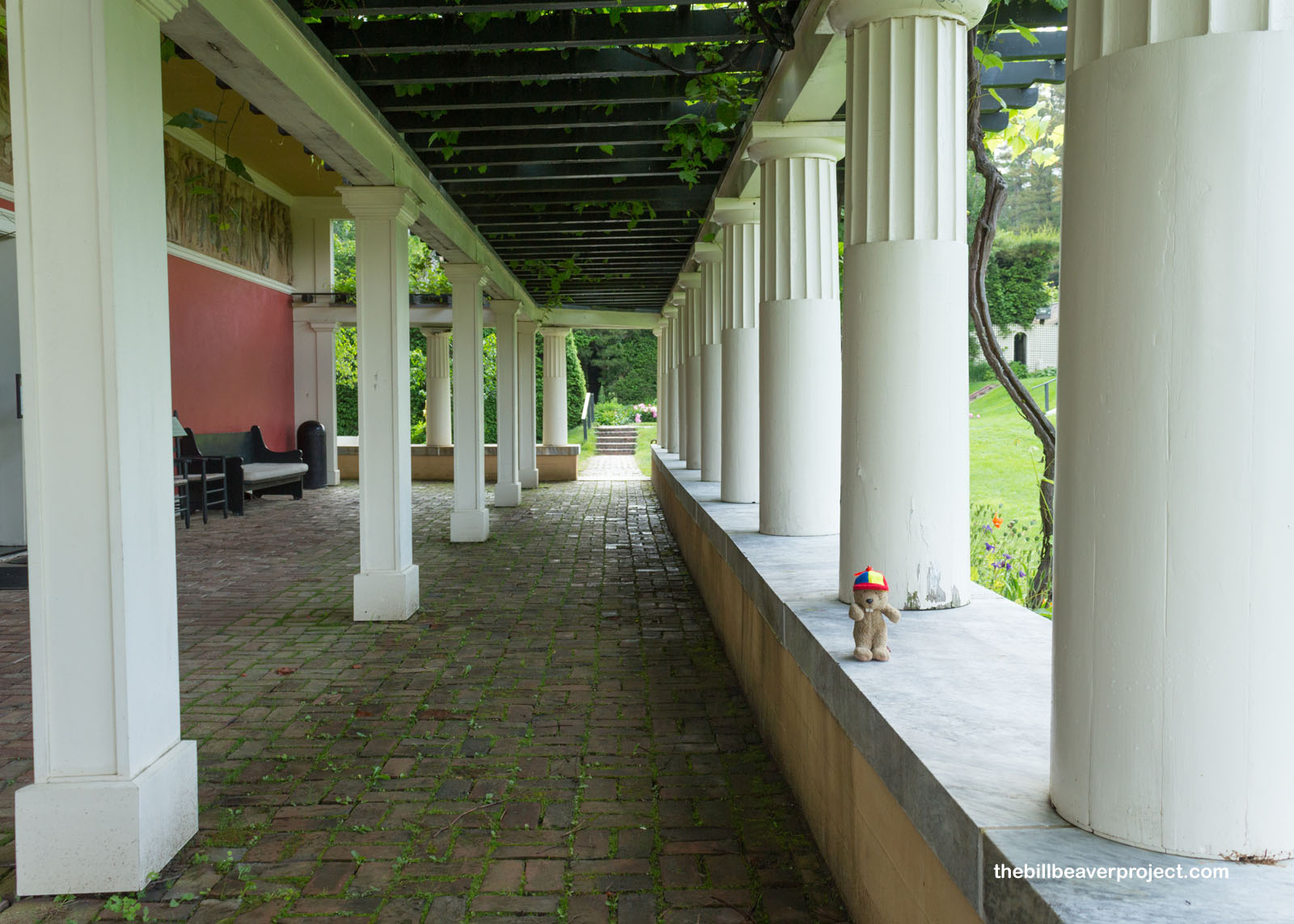 |
Originally, the Little Studio housed replica Renaissance paintings to serve as inspiration for Mr. Gaudens’ work! When I visited, the space was mostly open floor with exhibits and sculptures lining the walls that talked about Mr. Saint-Gaudens and his family!
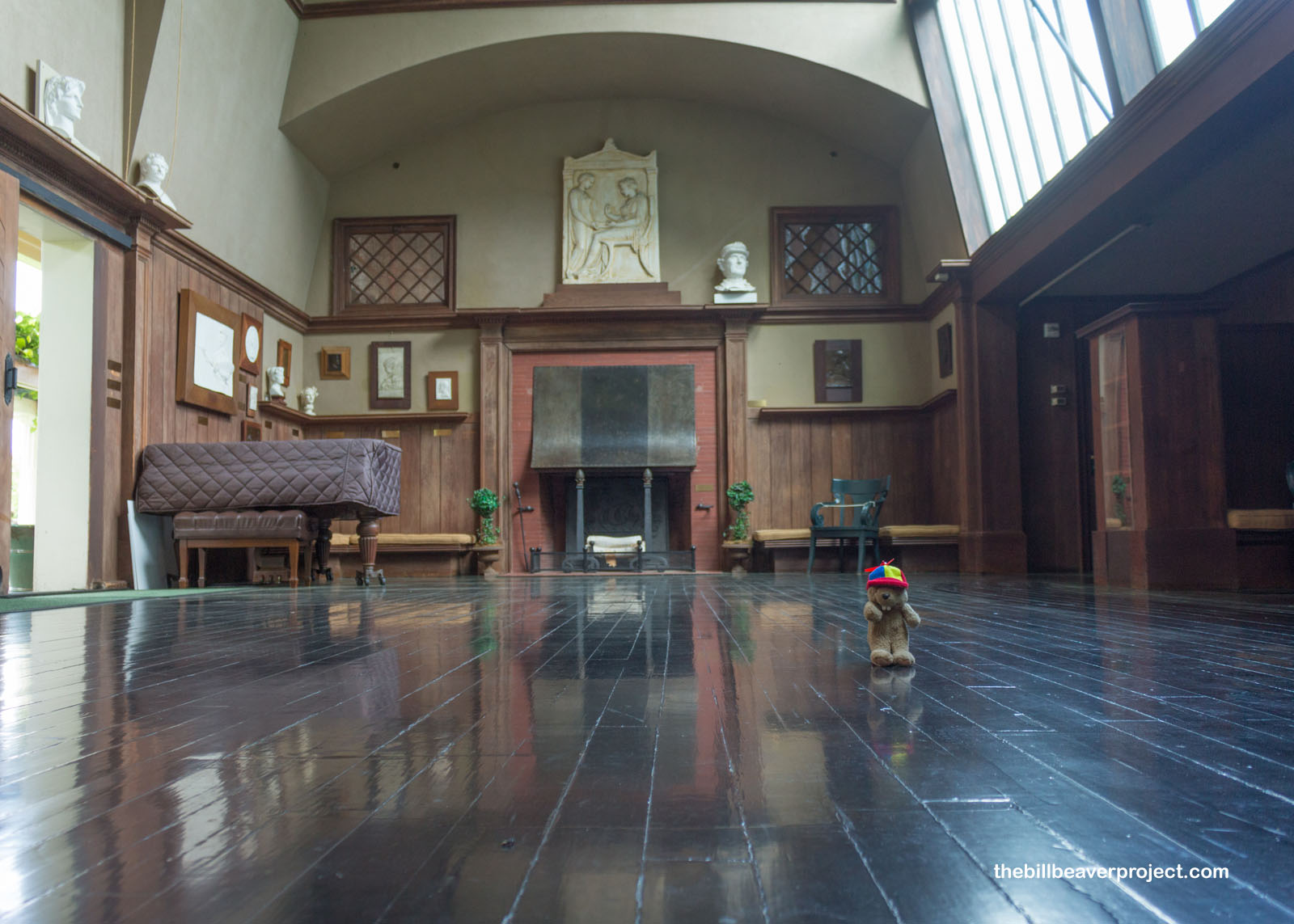 |
But the neatest part of the Little Studio was the plaster molding room! This was the midpoint in the production, where Gaeton Ardisson created plaster molds from Mr. Saint-Gaudens’ sculpted clay models. These molds were then used to cast bronze! Still in the studio were the molds of the horses from the General Sherman statue and the gold coins commissioned by President Teddy Roosevelt
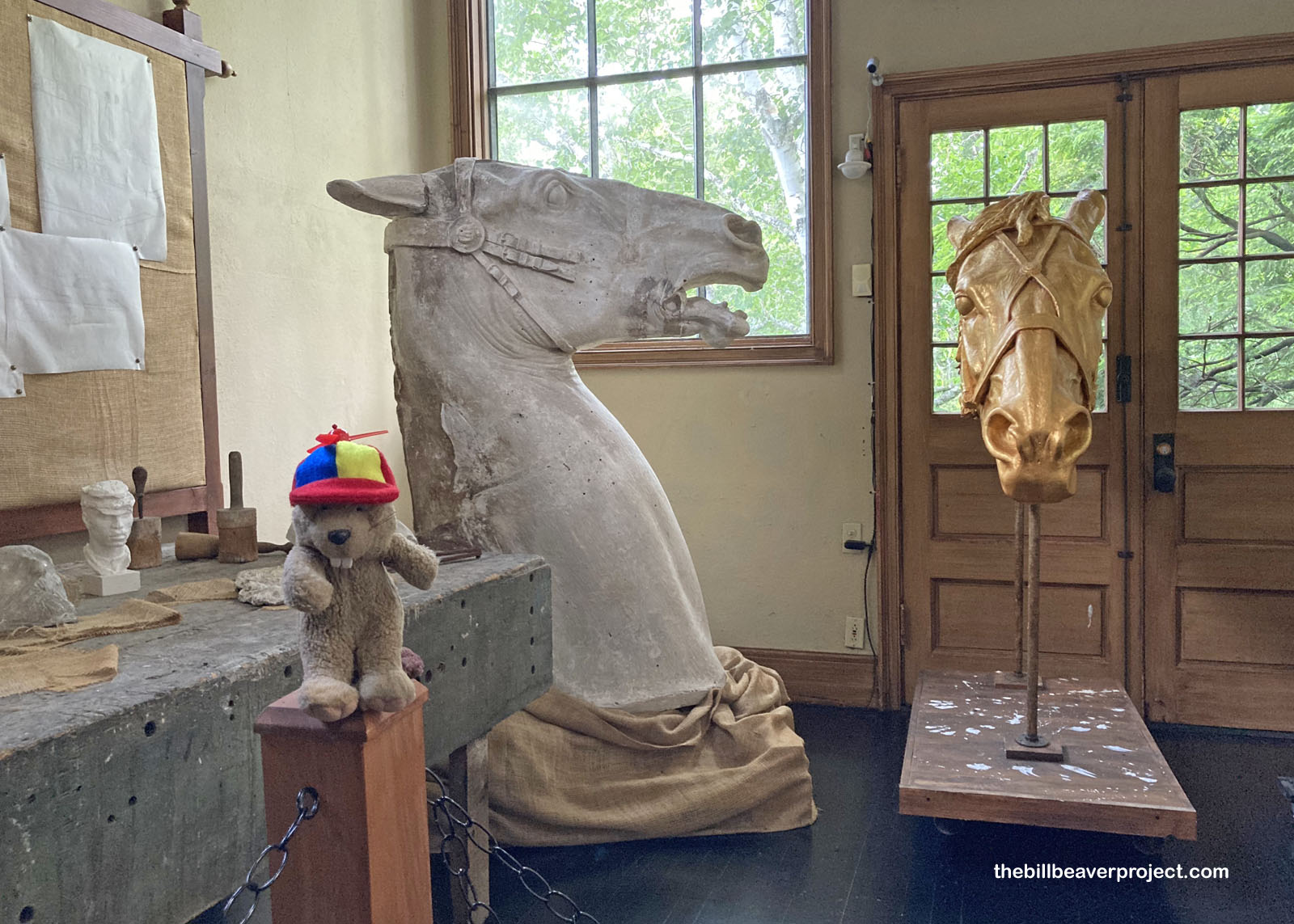 |
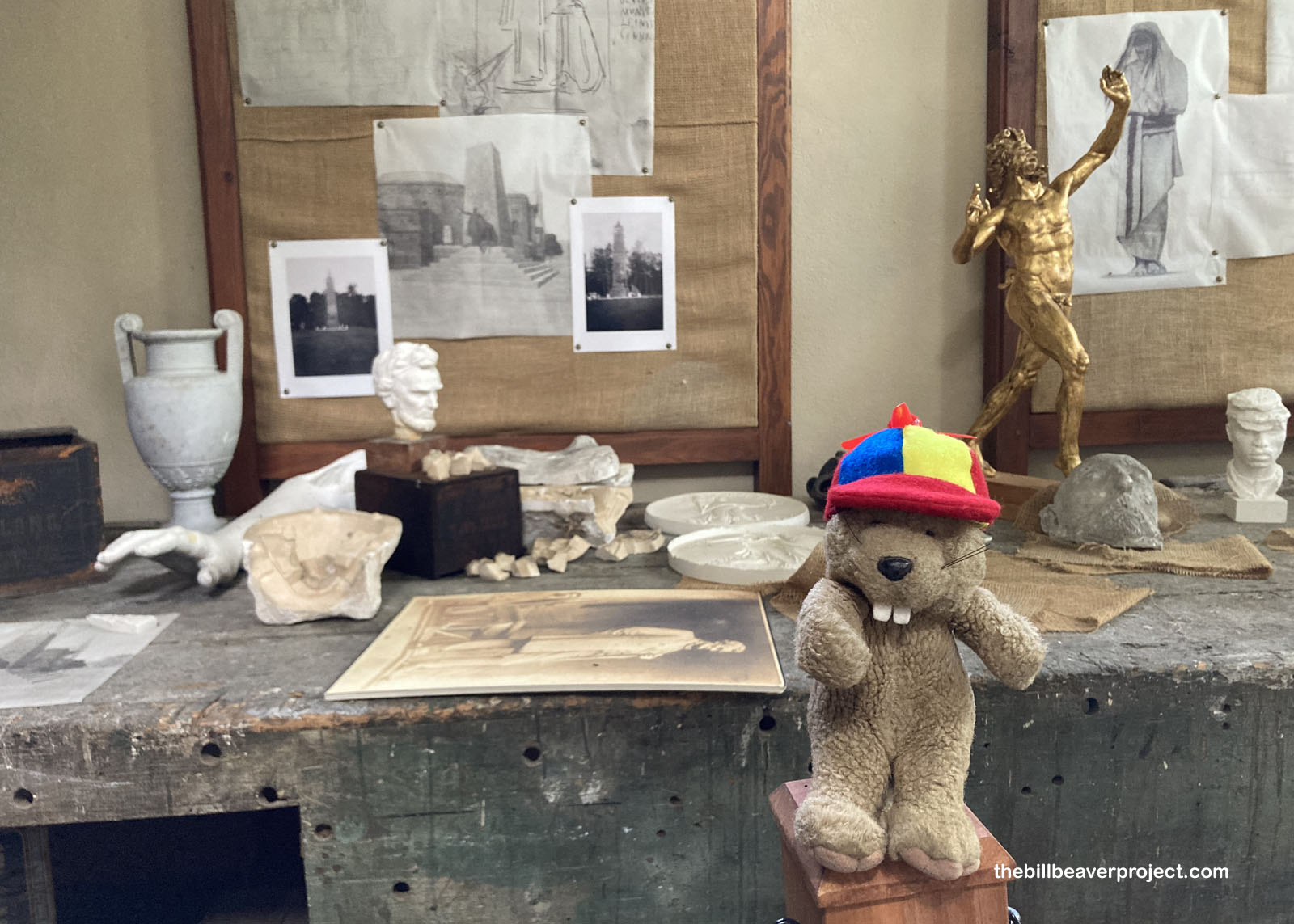 |
This Cornish Colony housed the pinnacle and the decline of Mr. Saint-Gaudens’ career. Diagnosed with cancer in 1900, he and his family lived here for another 7 years, and when he died, Mrs. Saint-Gaudens commissioned this Temple, modeled after the scenery from a pageant that other Colony residents performed for them two years earlier to mark their 20th anniversary in Cornish. Today, this is the final burial place for both Augustus and Augusta.
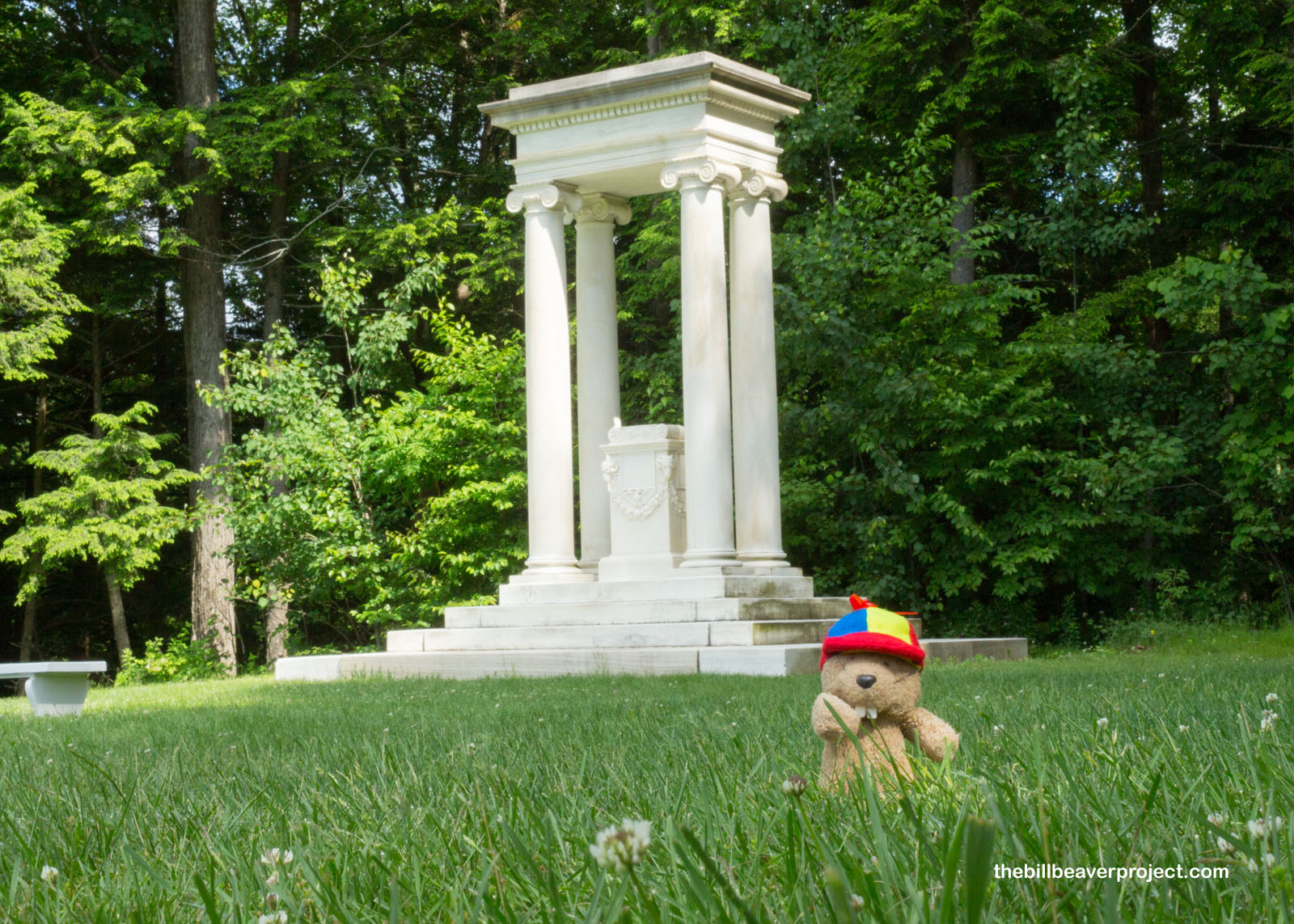 |
Down the hill from the Temple was the old Blow-Me-Down Mill, part of the farm owned by Charles Beaman, Jr. It was Mr. Beaman who first invited the Saint-Gaudens family to visit Cornish! This mill both ground grain for the Colony and generated electricity! It was the last operating grist mill in the area, closing its doors in 1910!
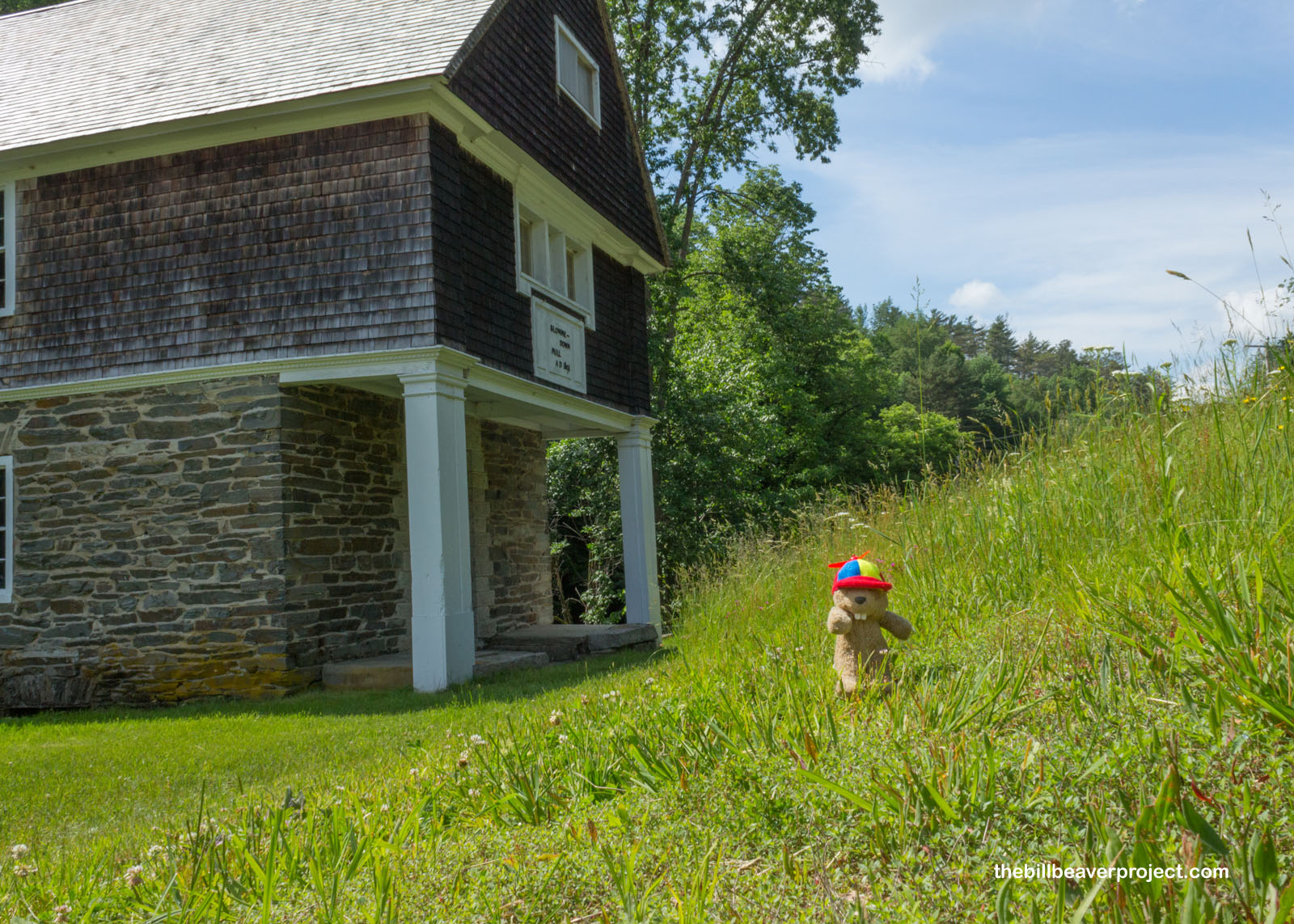 |
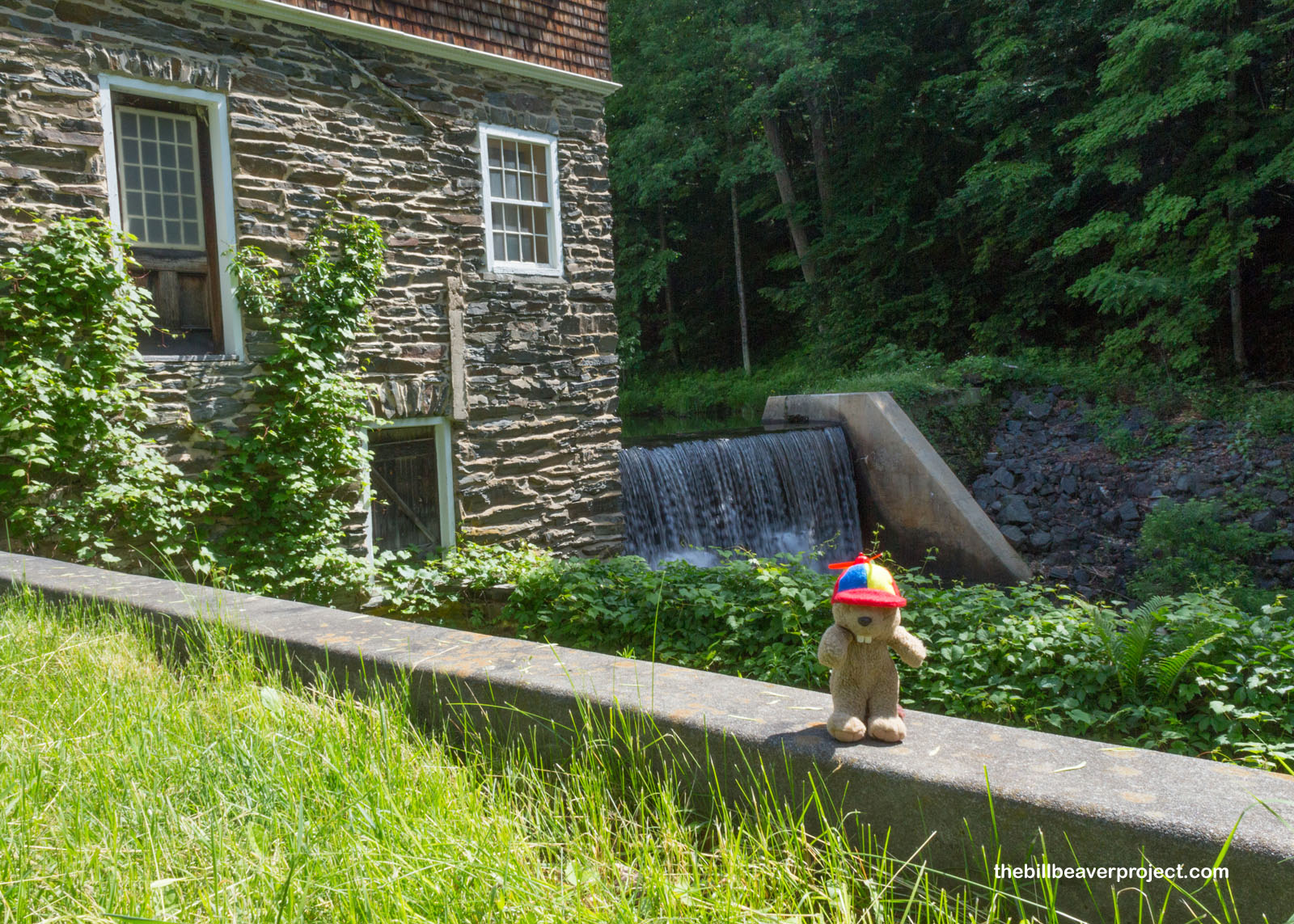 |
100 year later, Blow-Me-Down Farm became part of Saint-Gaudens National Historic Site, which made the site eligible for upgrade to a National Historical Park! That took place on March 12, 2019 with the passage of the John D. Dingell Jr. Conservation, Management, and Recreation Act!
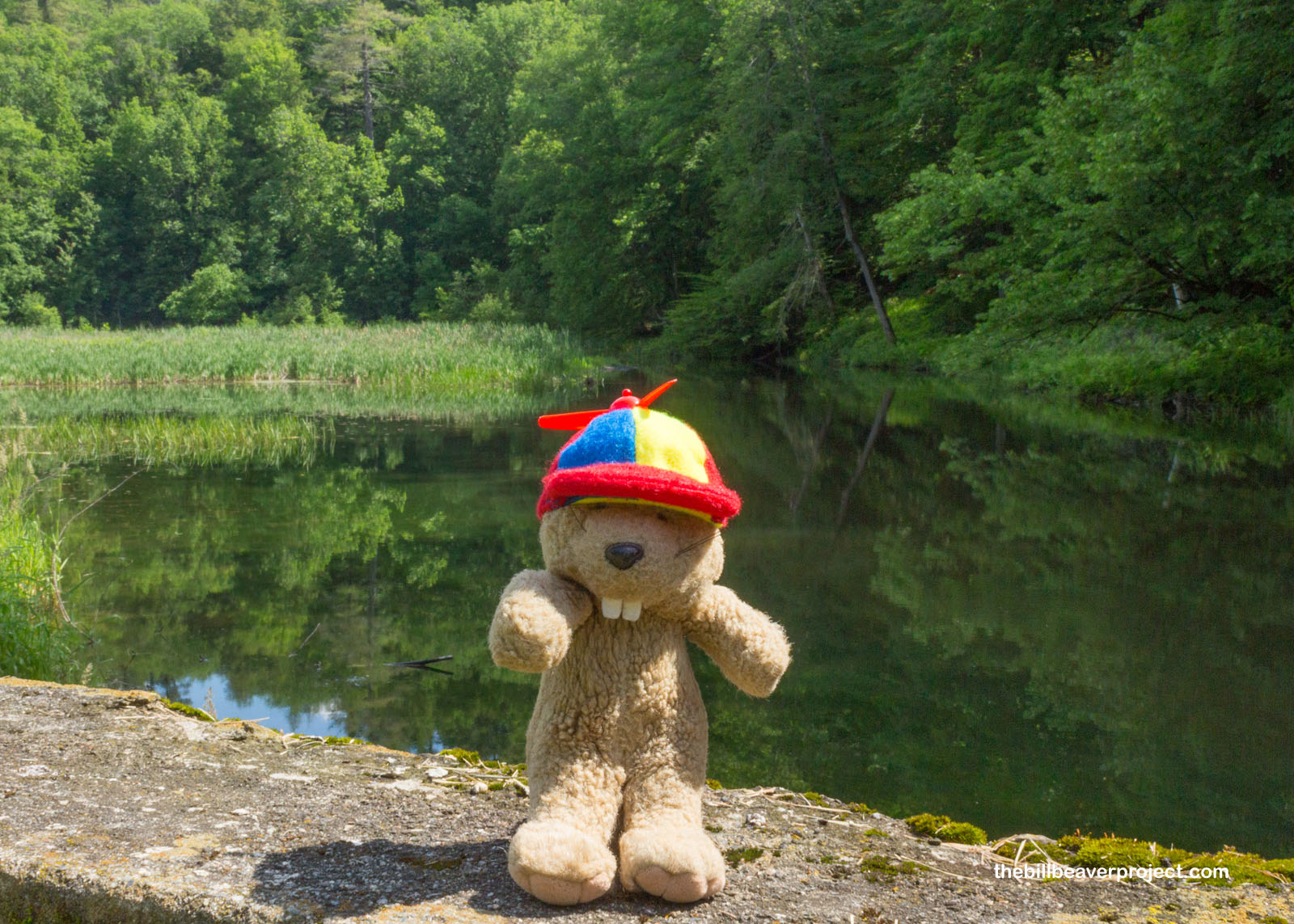 |
With the day heating up, it was time to head west across the Connecticut River with the help of the Cornish-Windsor Bridge! Bela Fletcher and James Tasker constructed this 460-foot covered bridge, which was the longest wooden bridge in the USA until the 613-foot Smolen-Gulf Bridge snatched that title in 2008! In any case, this pretty covered bridge got me back into the Green Mountain State lickety split!
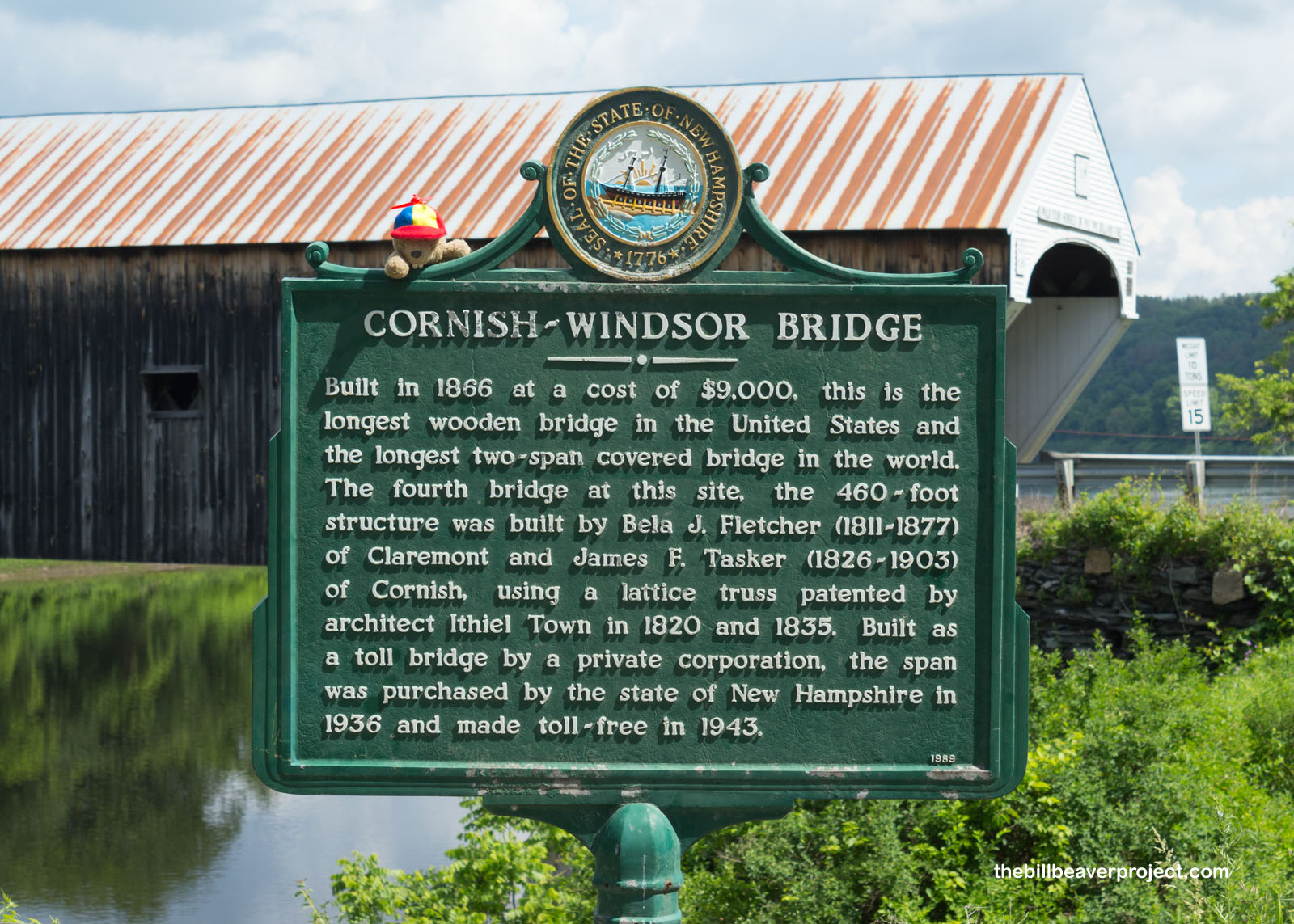 |
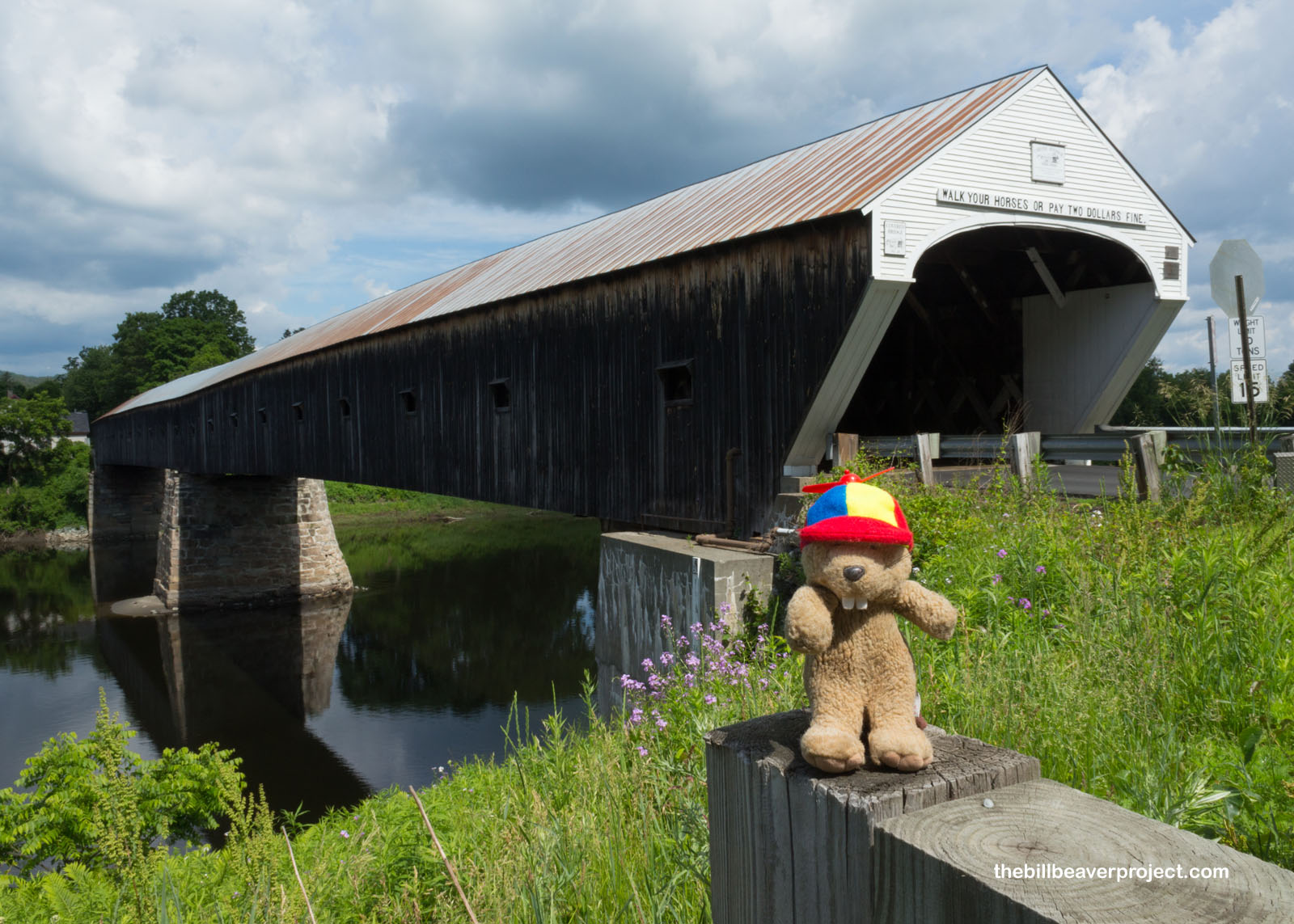 |
That took me to Woodstock, Vermont, home to Marsh-Billings-Rockefeller National Historical Park! This was birthplace of America’s conservation movement, and I was ready to explore some of the neat accomplishments made in these woods!
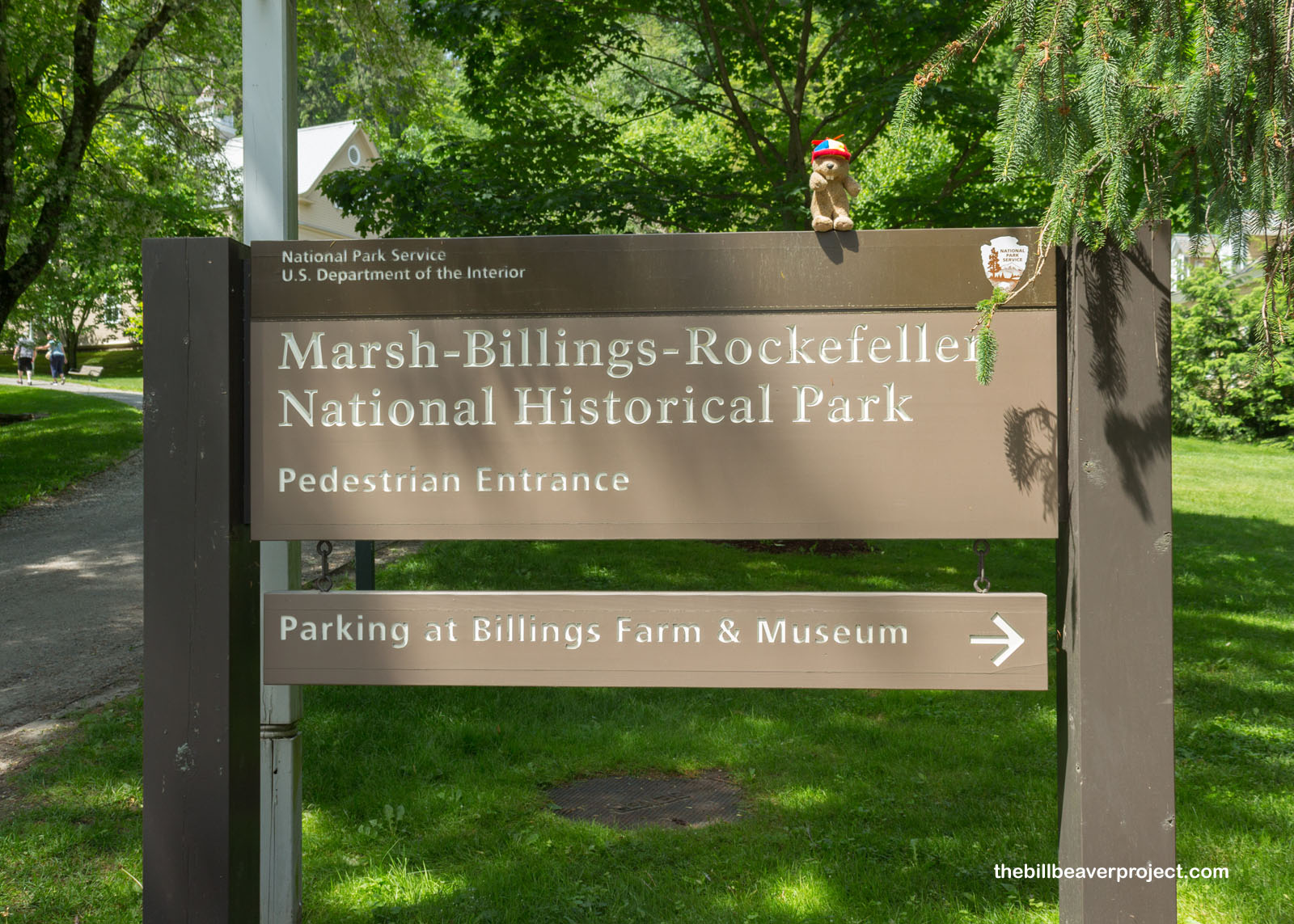 |
First, though, I had to say “Good moo-ning” to these two Jersey cows! The Billings Farm, next door to the historical park, rose to fame with its Jersey herd, imported by George Aitken in 1884. Their butter won top honors at the World’s Columbian Exposition in Chicago in 1893, and the Billings cows still produce more than 600,000 pounds of milk every year!
 |
Because it was starting to get hot, I opted for a shady trail to get started. This one was going to lead to a neat pond called a Pogue, and what beaver could resist a cooling dip on a hot day?!
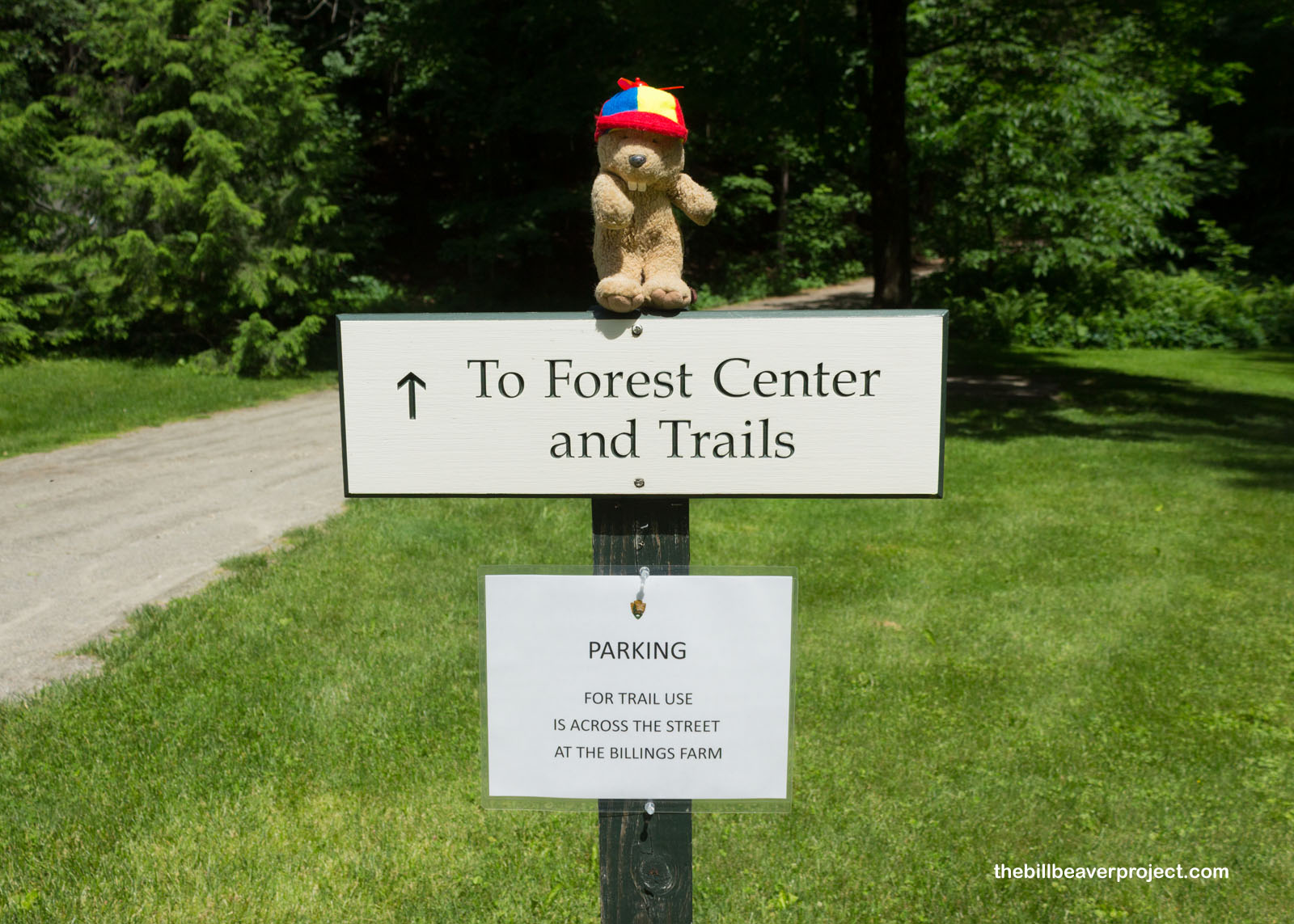 |
This wood barn tells the story of hills stripped of their trees to make room for potash mining and a rampant sheep industry! This was what the owner of this property, George Marsh, lamented about in his influential writings: that misuse of the land would ultimately threaten humanity’s survival! What Mr. Marsh wrote, his successor at this property, Frederick Billings, put into action. A staunch supporter of establishing national parks, Mr. Billings took up the task of reforesting the state of Vermont!
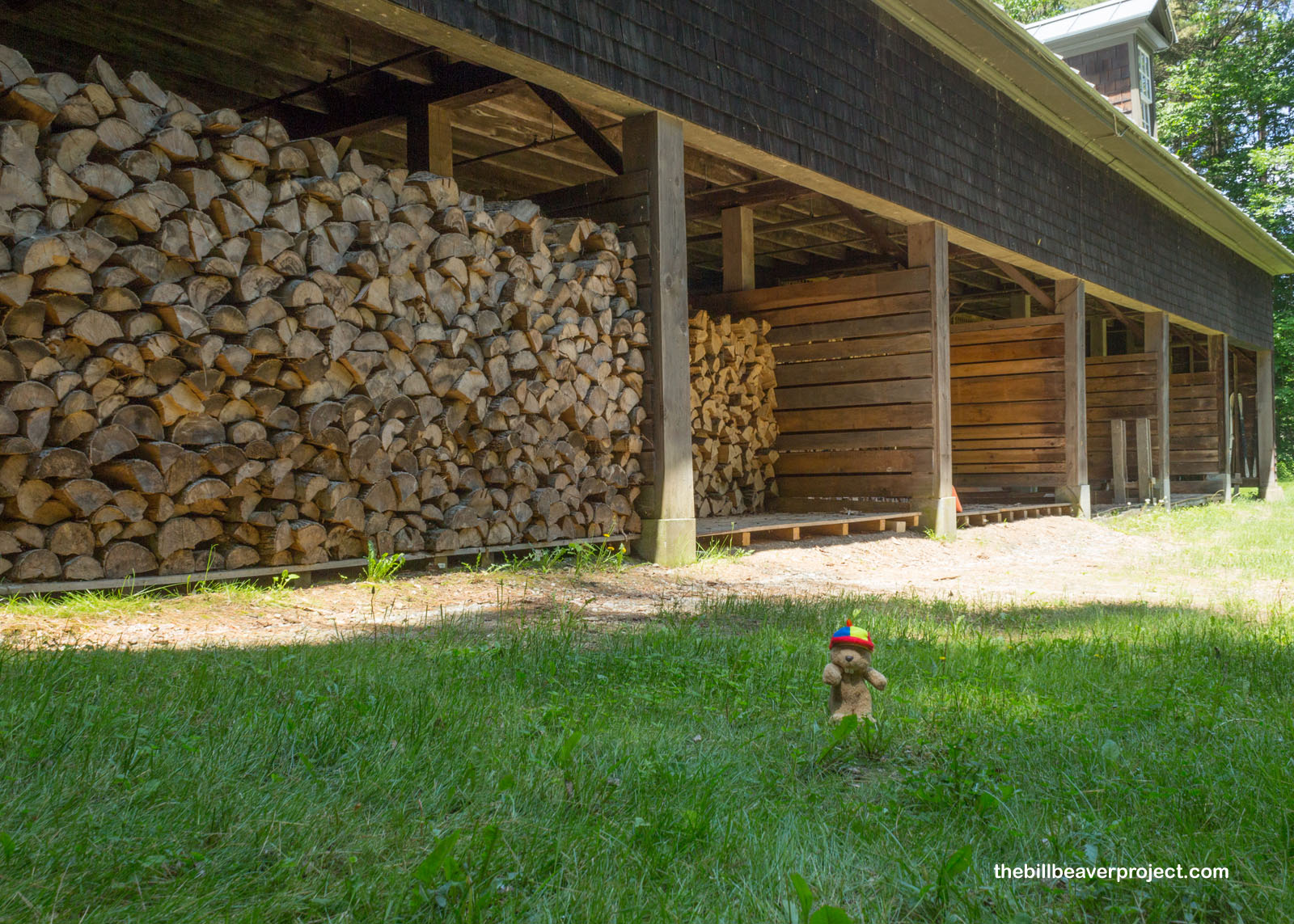 |
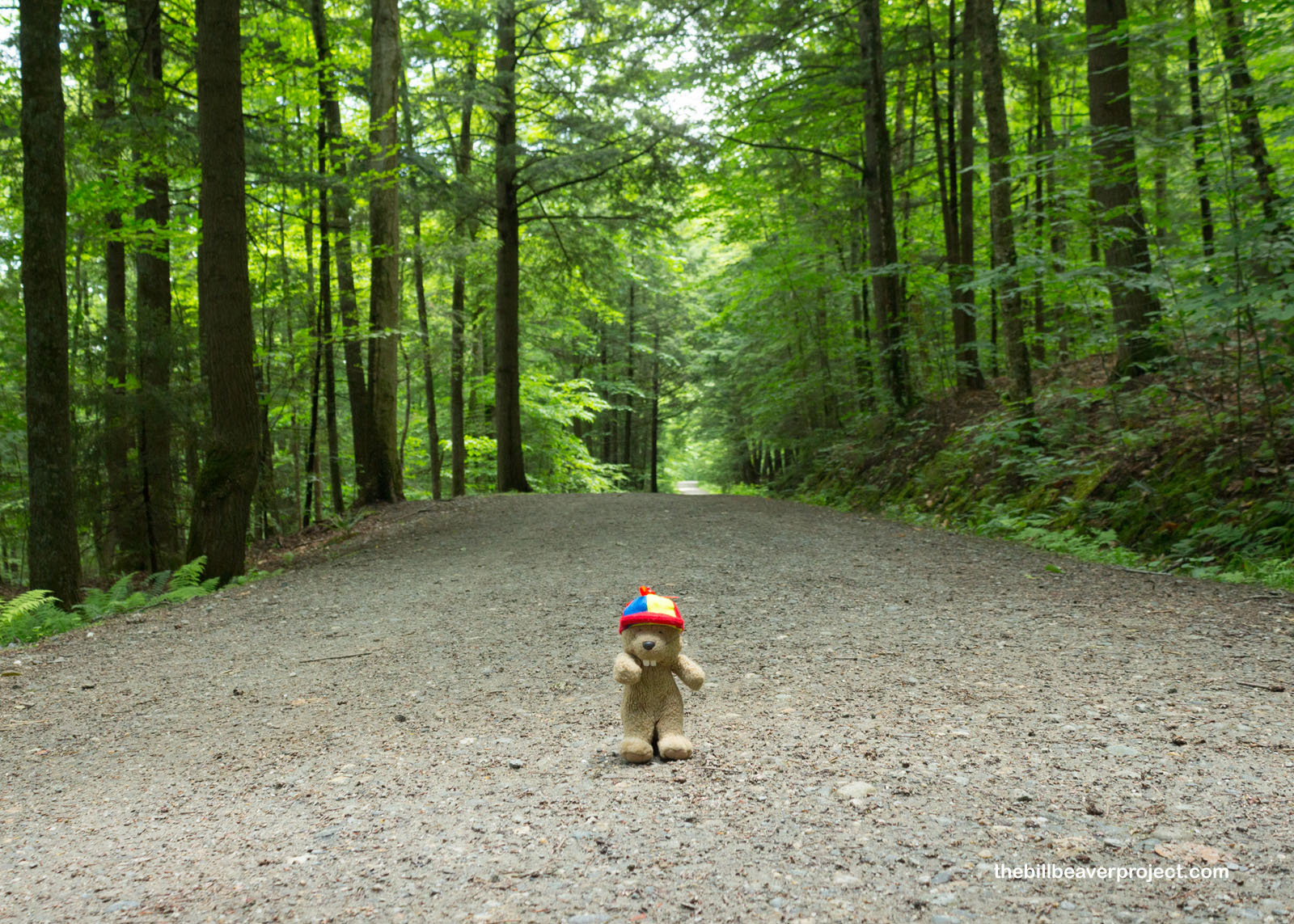 |
Paying no attention to the local flora, since there wasn’t much left to reference, Mr. Billings and his Scottish partner, Mr. Aitkin, introduced European trees, like Scotch pines, Norway pines, and larches to green up the Green Mountains once again. Today, while not exactly as it was before mass deforestation, these woodlands are exceptionally dense once again!
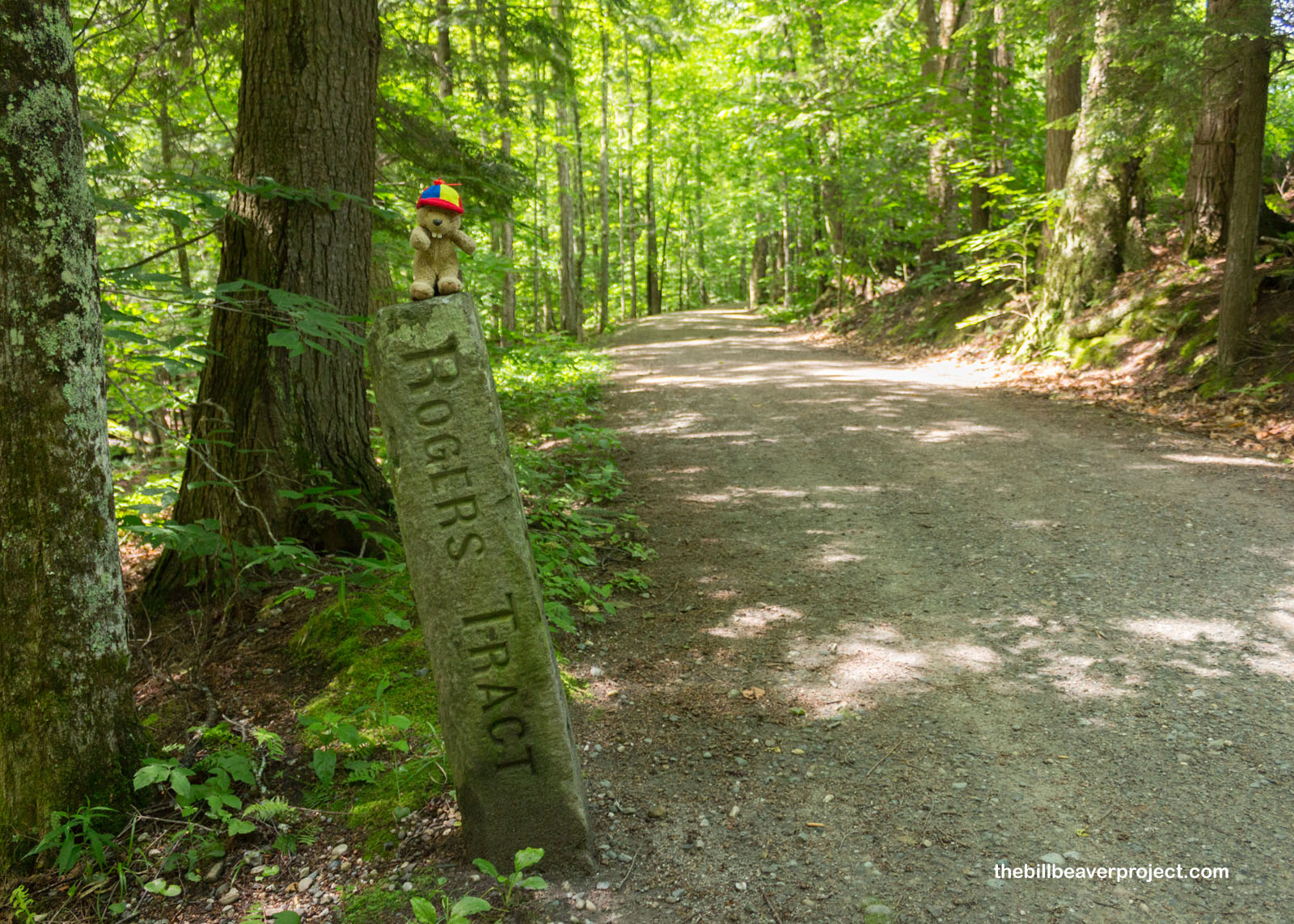 |
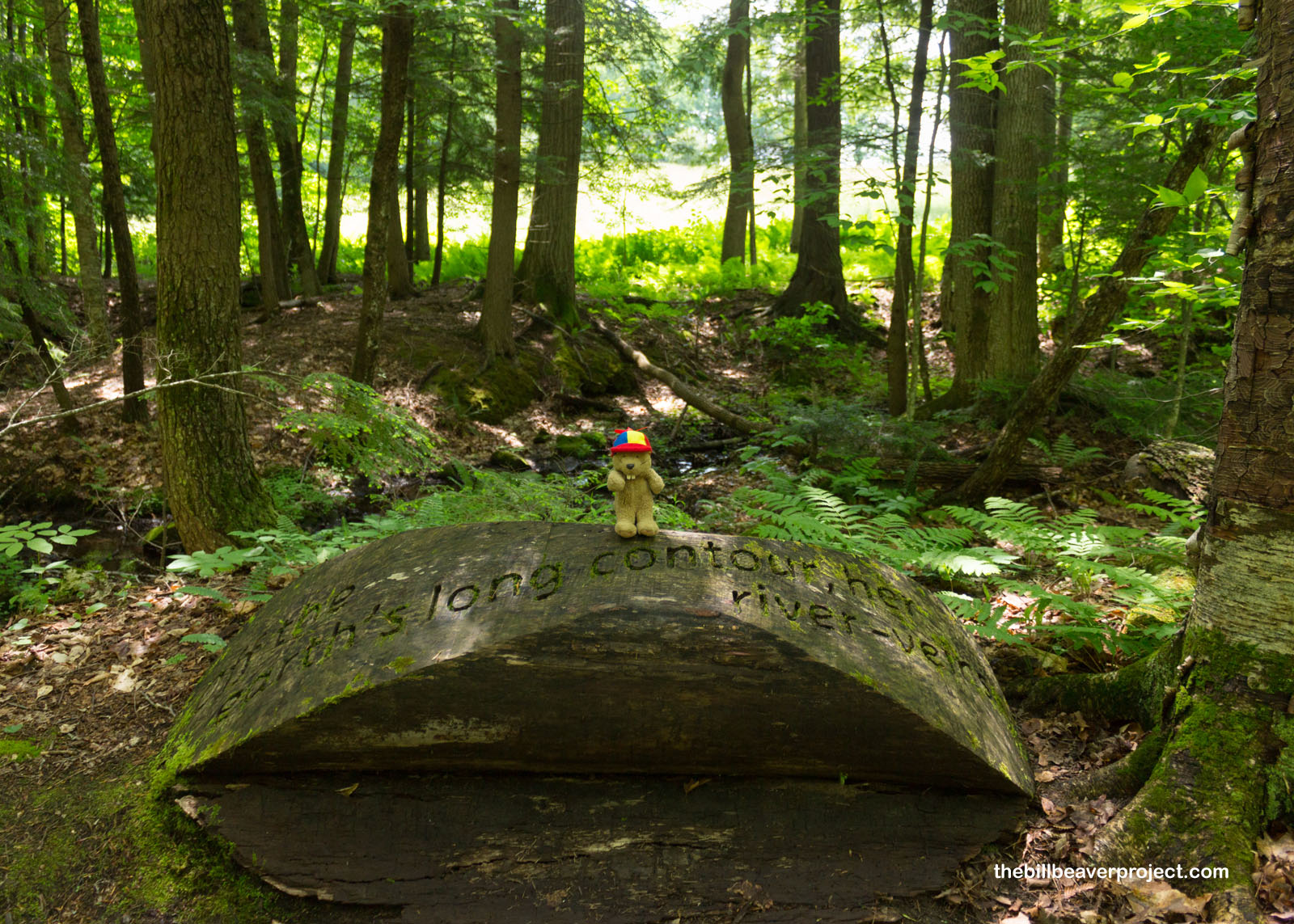 |
After marveling at artistic fountains and poetic carvings in stumps all along the way, I reached the cutoff to the Pogue and quickened my steps!
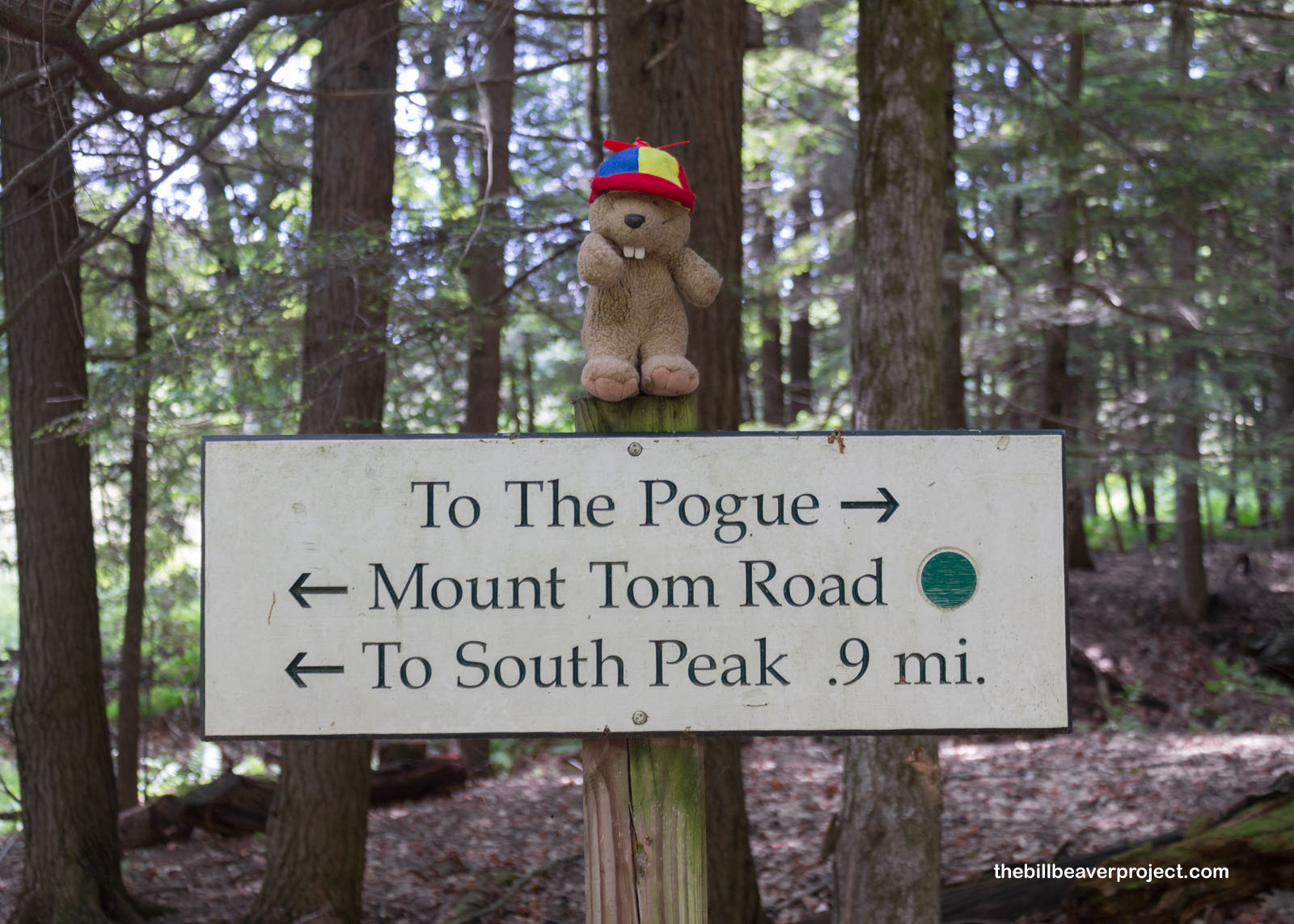 |
Not to be confused with the World War I military slang for a noncombatant, this Pogue was another creation of Mr. Billings! It’s a dammed off pond whose name is shrouded in mystery, possible an Abenaki term, maybe a Gaelic term for a kiss. It was never recorded! What was certain was that, even though swimming wasn’t allowed, I was going to soak up as much natural beauty as I could!
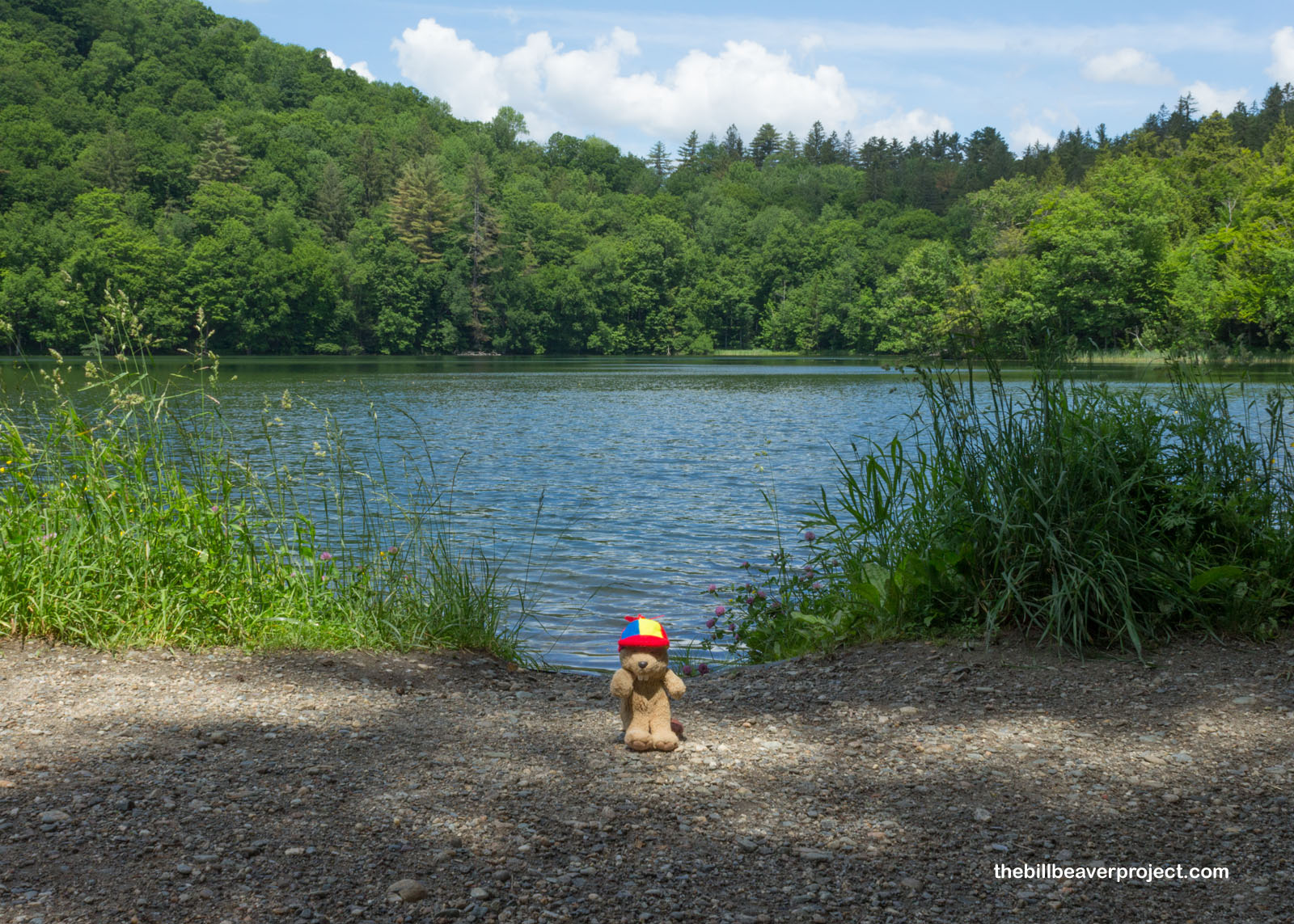 |
And stroll I did, listening to the peeps and bellows by frogs of all sizes, wrapped up in overwhelming greenery! Living in the dry West, I’m always astonished by how green the East Coast is, year-round!
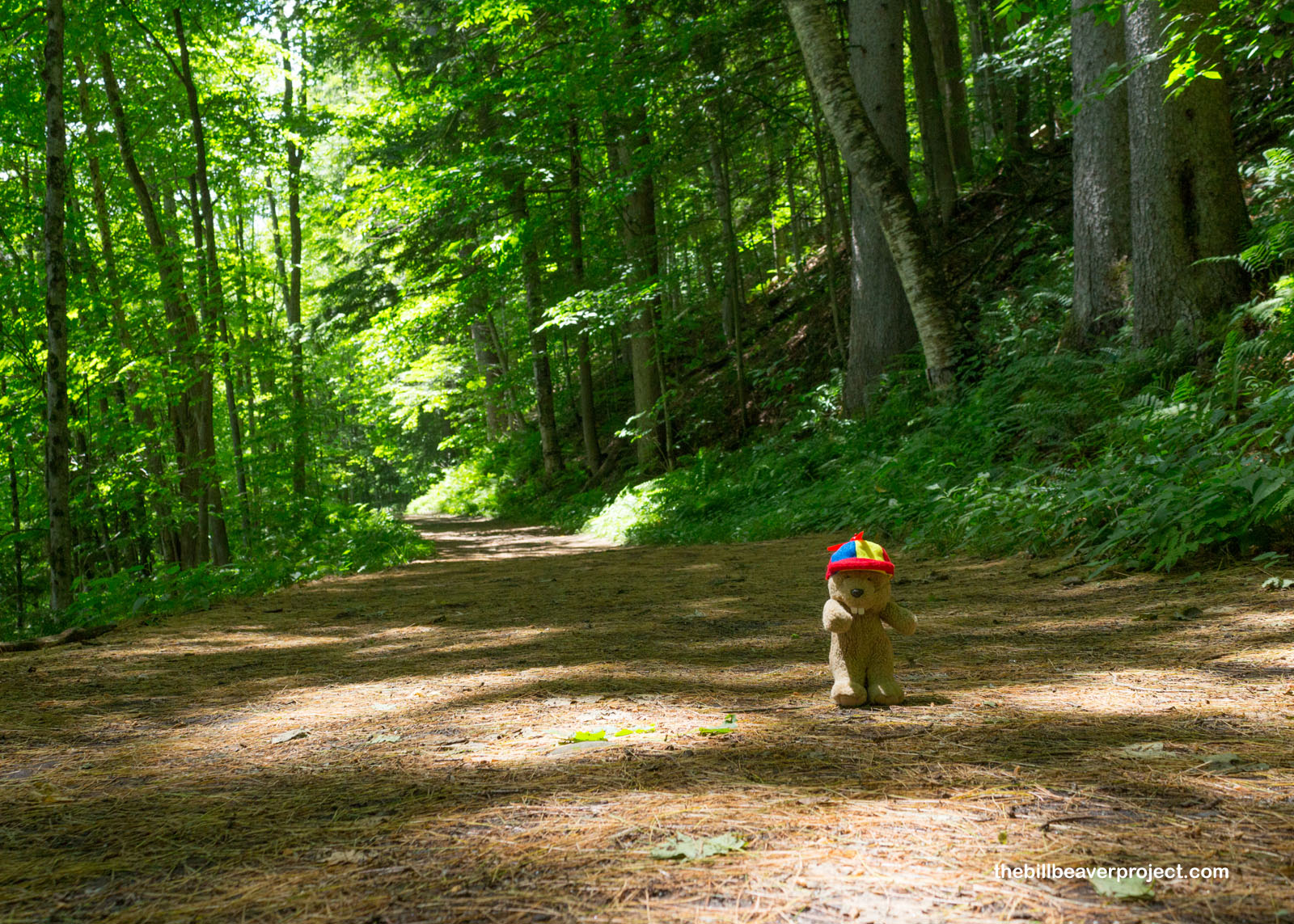 |
And all around the Pogue were logs carved with verses, like this one, which read “The tough waters can petrify wood!” Some of them could be attributed, like Seamus Heaney’s quote from Antaeus, “Off the earth’s long contour, her river-veins,” but others remained a mystery, ripe for reflection on a leisurely stroll!
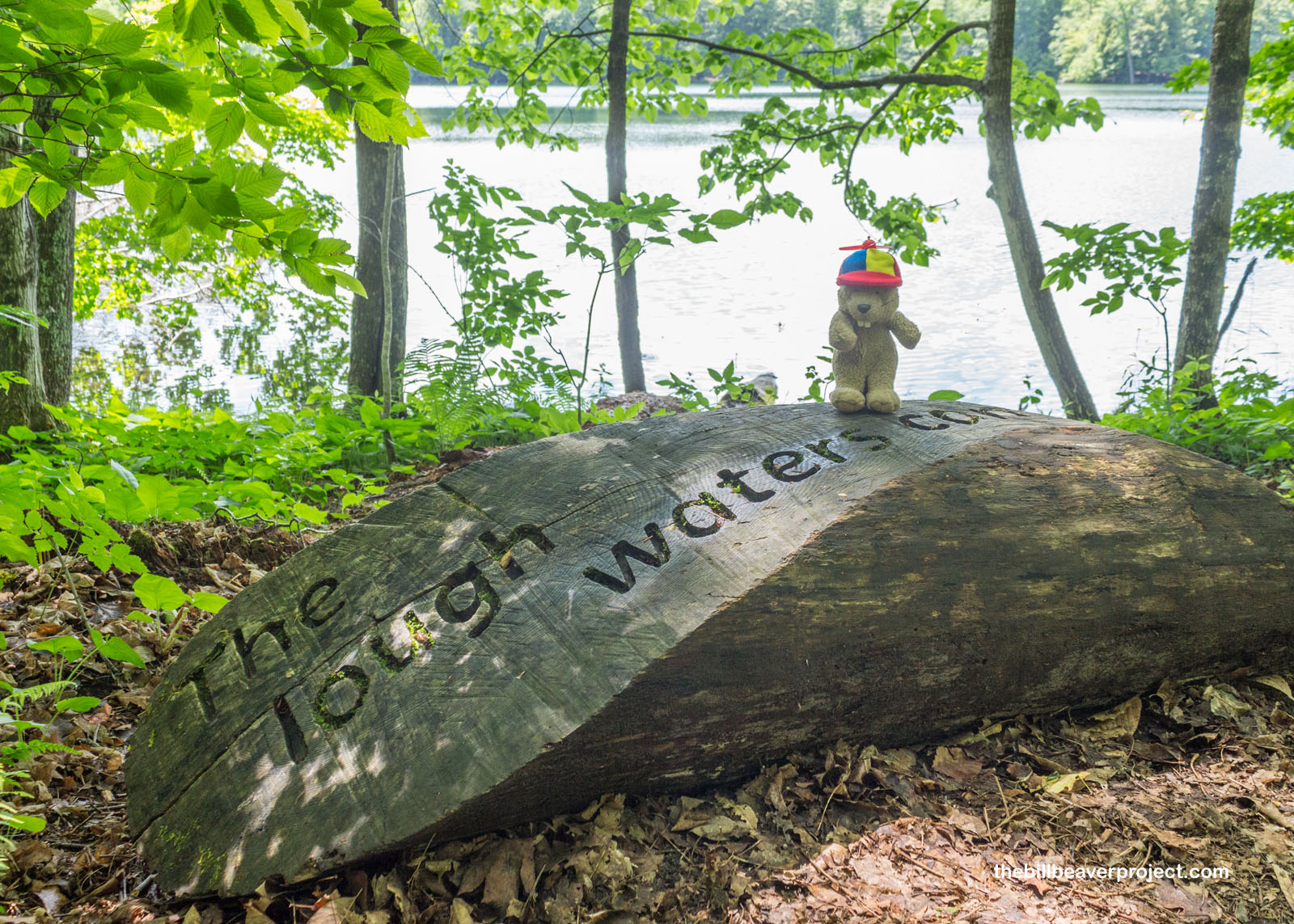 |
Down by the waterside, there were the tiniest of frogs, spring peepers in fact! They were so small that I couldn’t catch any on camera, but they sure were friendly! Human-made or no, the Pogue is an invaluable resource for all kinds of wetland species and an excellent addition to this national park space!
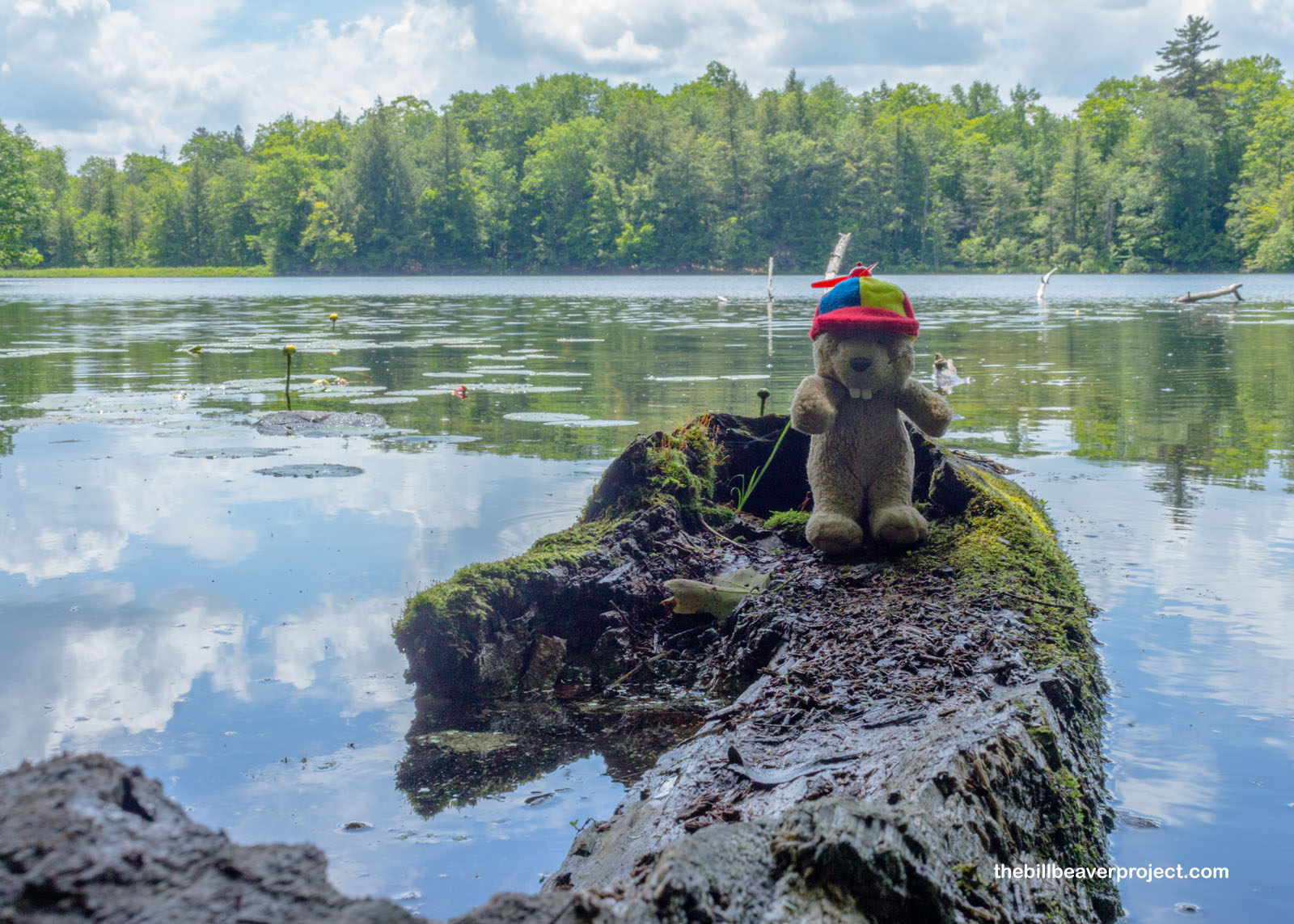 |
After completing the Pogue Loop, I swung by the park’s visitor center, built in 1895! Before it was a visitor center, it was a carriage barn for the Billings family, housing horses, carriages, and sleighs! Today, it’s full of exhibits about the past, present, and future of Vermont conversation, as well as the folks behind it!
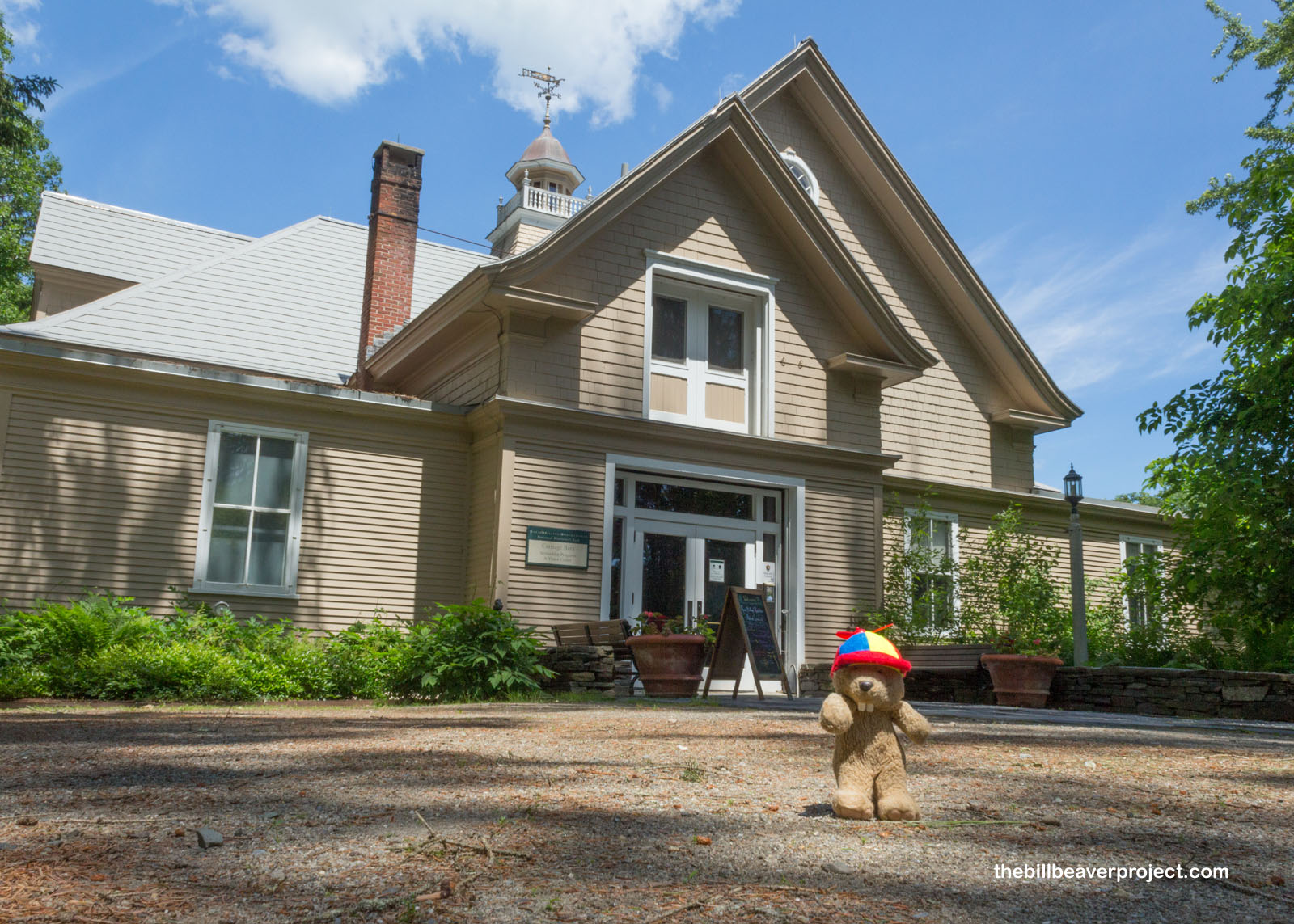 |
And then I saw the home that tied the whole park together! When Charles Marsh lived here in 1805, it was a Federal style brick home, but after Frederick Billings took ownership, he had it remodeled in the French Second Empire style in 1869! Finally, in 1954, the home passed to Frederick’s granddaughter, Mary, who’d married Laurance Rockefeller, grandson of John D. Rockefeller and champion of national park creation! Together, they remodeled this home one last time into the Queen Anne style we see today!
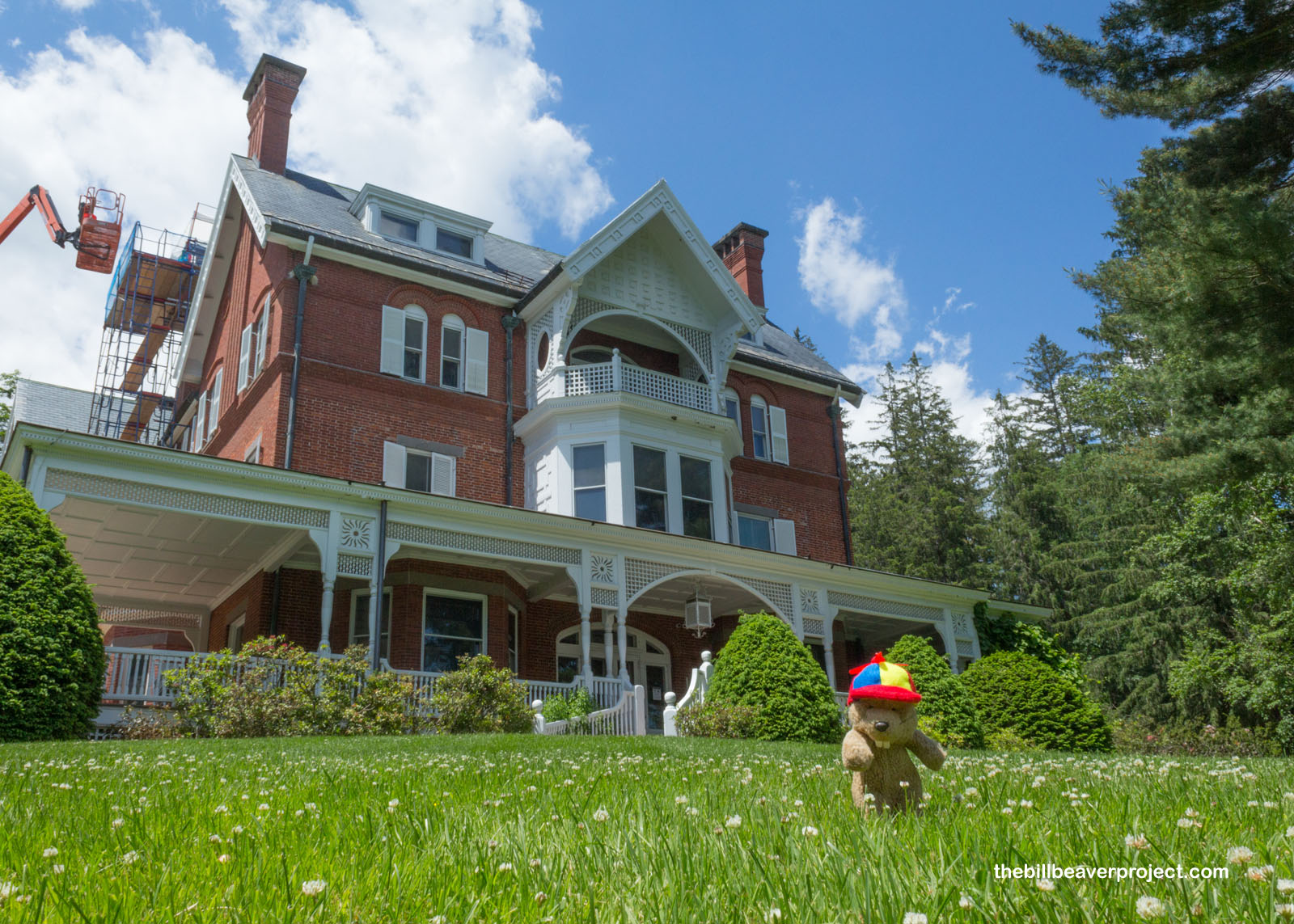 |
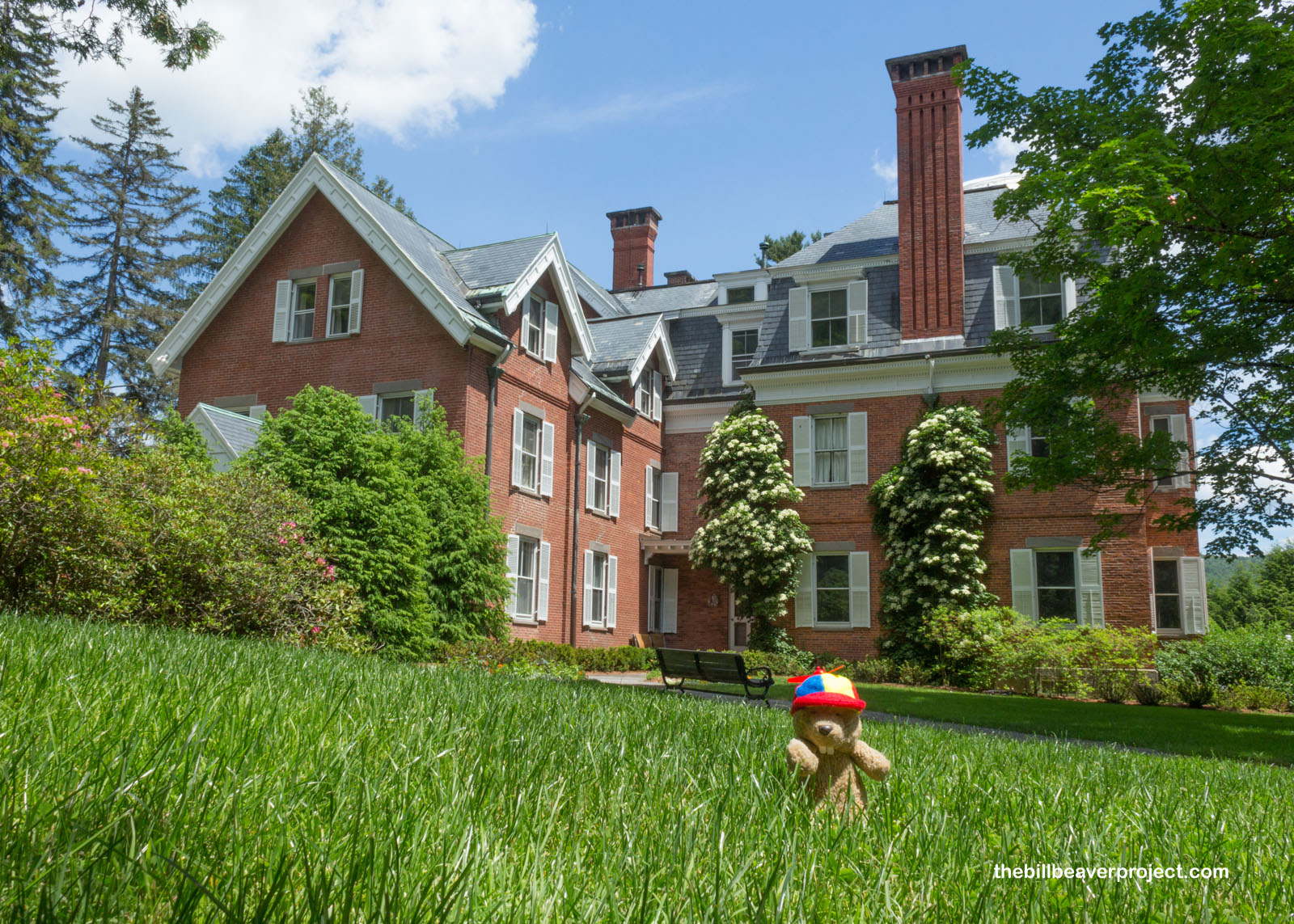 |
While restoration work was being done above, I took a moment to cool off in the shade of the mansion’s porch. But, never one to sit still for long, I quickly resumed my wanderings!
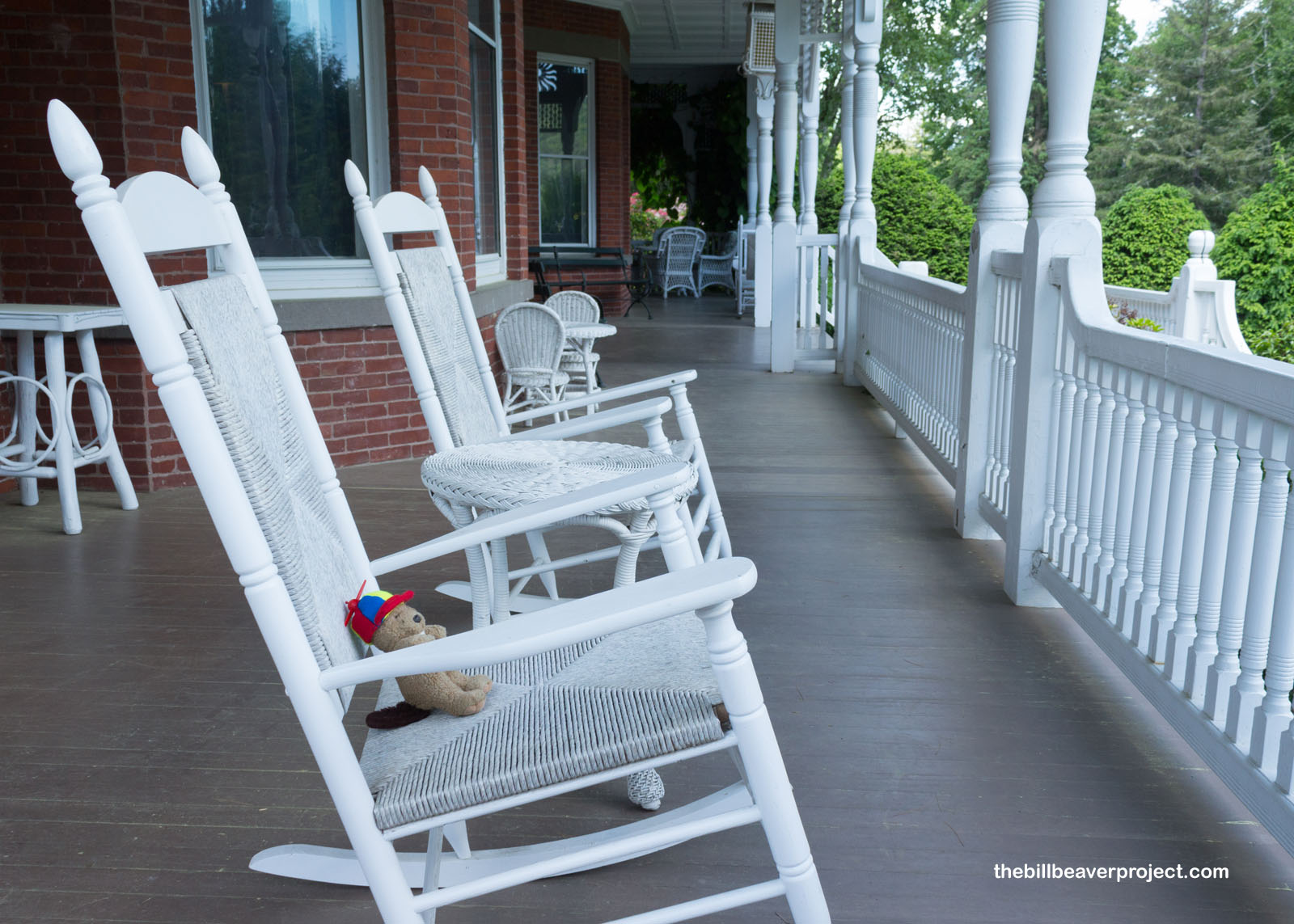 |
The Billings paid extensive attention to landscaping, drawing talent from the nearby Cornish Colony like Charles Platt, who designed these gardens, and Ellen Shipman, who later redesigned them! Even while I was there, a gardener was hard at work maintaining these plants, and I did my best not to interrupt!
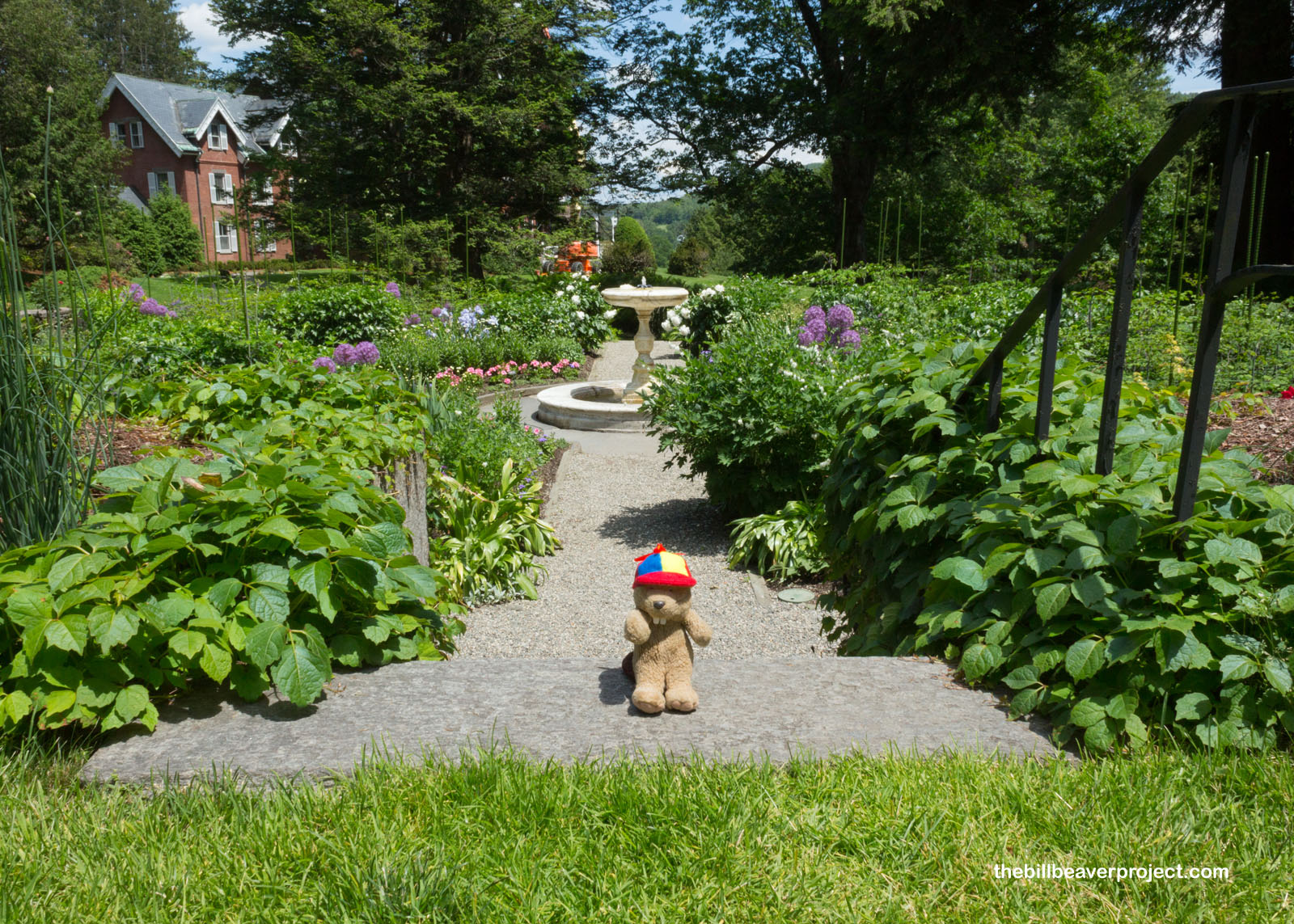 |
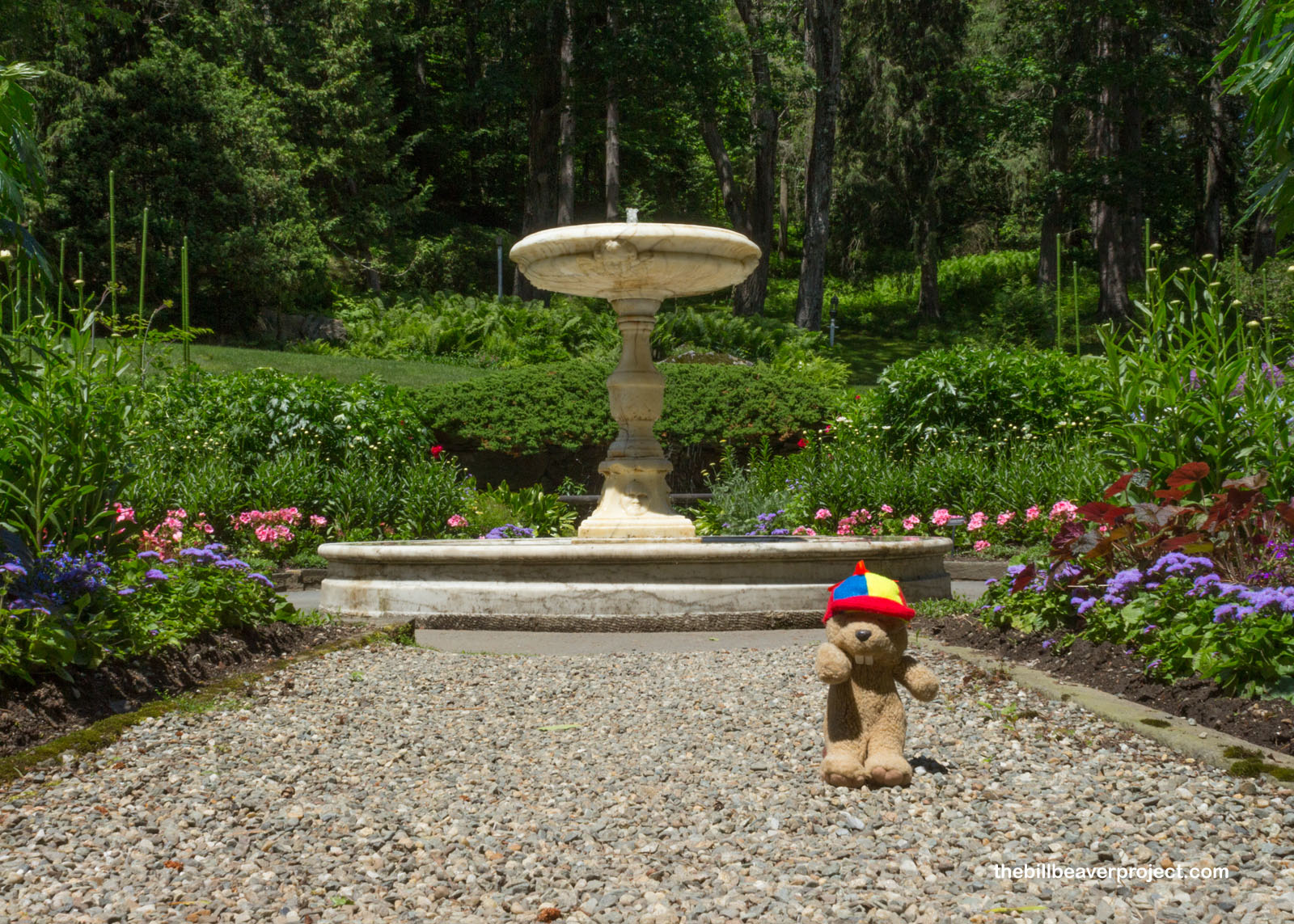 |
Having visited both of my intended national park sites for the day, I took a lunch break back at the AirBNB then set out to explore what other historical sites I could find before the sunset. For example, after many visits to Utah over the years, I had no idea that founder of the Mormon Church, Joseph Smith, Jr., was born right here in central Vermont on December 23, 1805!
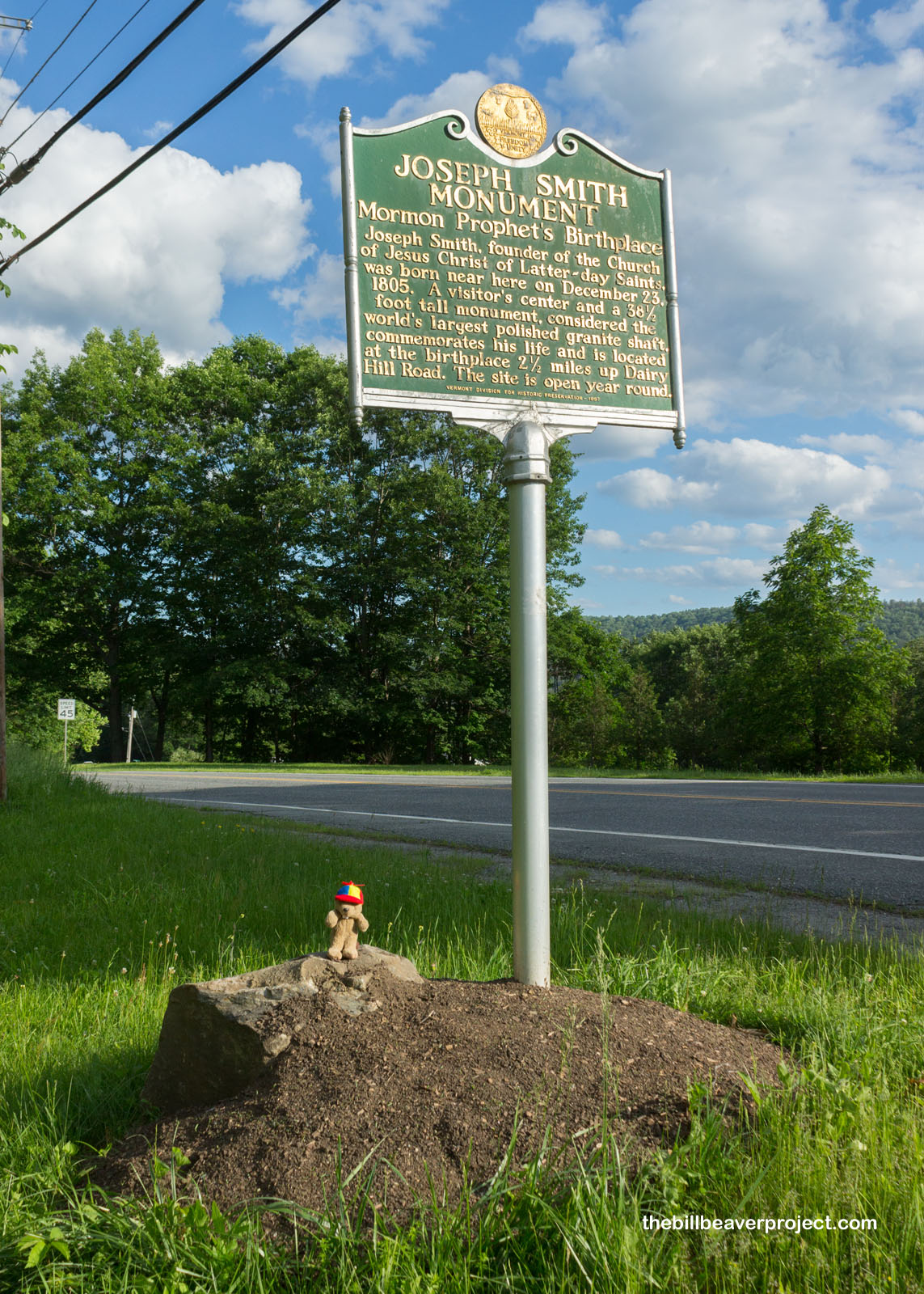 |
To mark the centennial, Junius Wells envisioned a monumental memorial and had a 50-foot granite obelisk hauled 40 miles through the Vermont winter for its December 23, 1905 dedication! Installed near the site of the Smith family cottage, this is claimed to be the world’s largest polished granite shaft, and sure enough, the sheen told me that folks have been polishing this shaft very well the last 117 years! I had time for a short tour, and the elder on duty, originally from Cedar City, was happy to oblige!
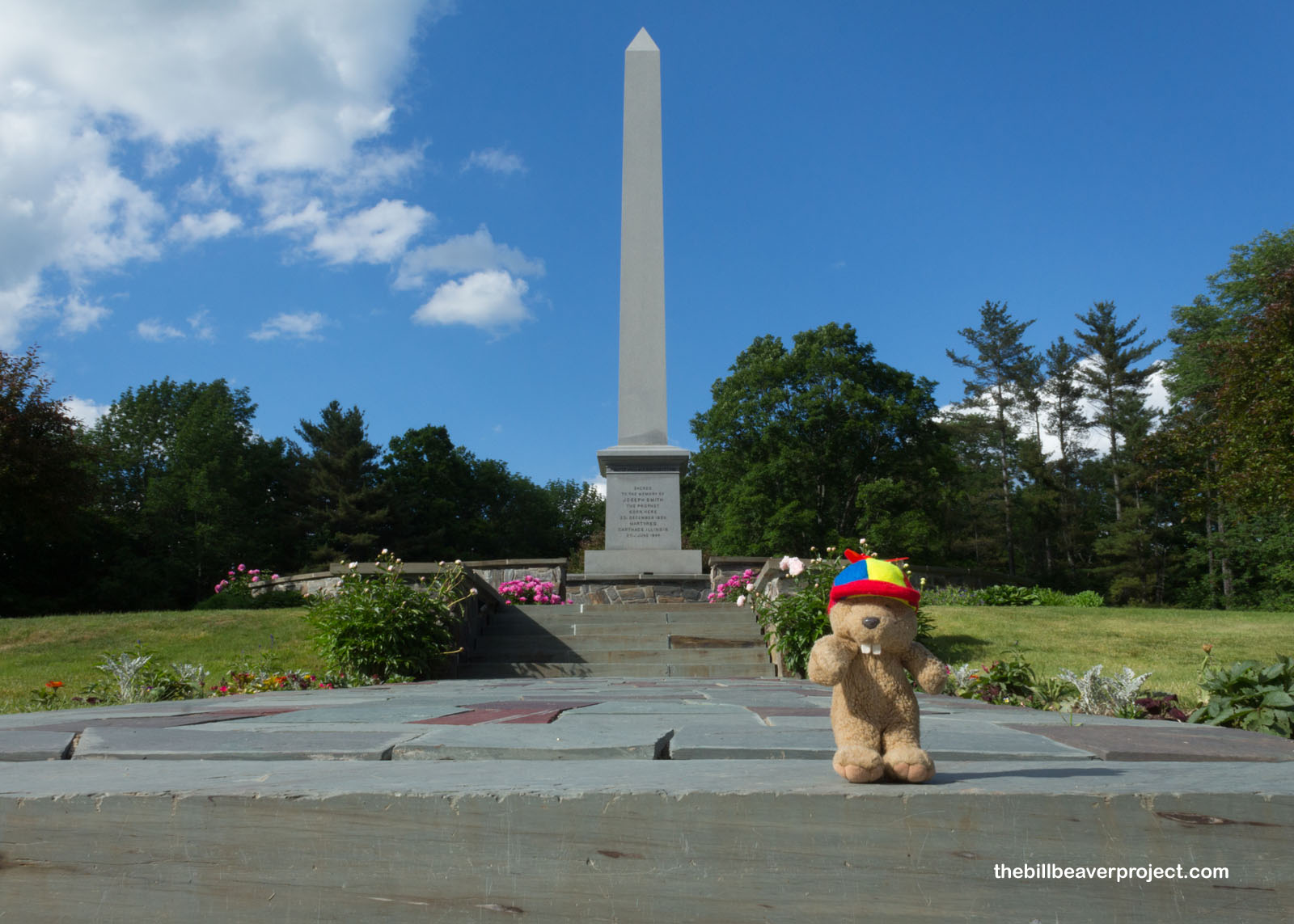 |
Originally, this land was owned by Solomon Mack, who invited his daughter, Lucy, and her hubby, Joseph, Sr., to live here while they settled some debts, and this is where Joseph, Jr. spent the first two years of his life! The foundation of their original cottage is still intact! My tour guide told me tales about how Joseph, Jr. endured a bone marrow surgery without anesthesia at age 7 and how all modern likenesses of him are based on his grandson, who was supposedly the spitting image of him! I thanked the guide for his time, and he invited me to come back at Christmas when they light up the entire grounds with lights, just like Temple Square in Salt Lake City!
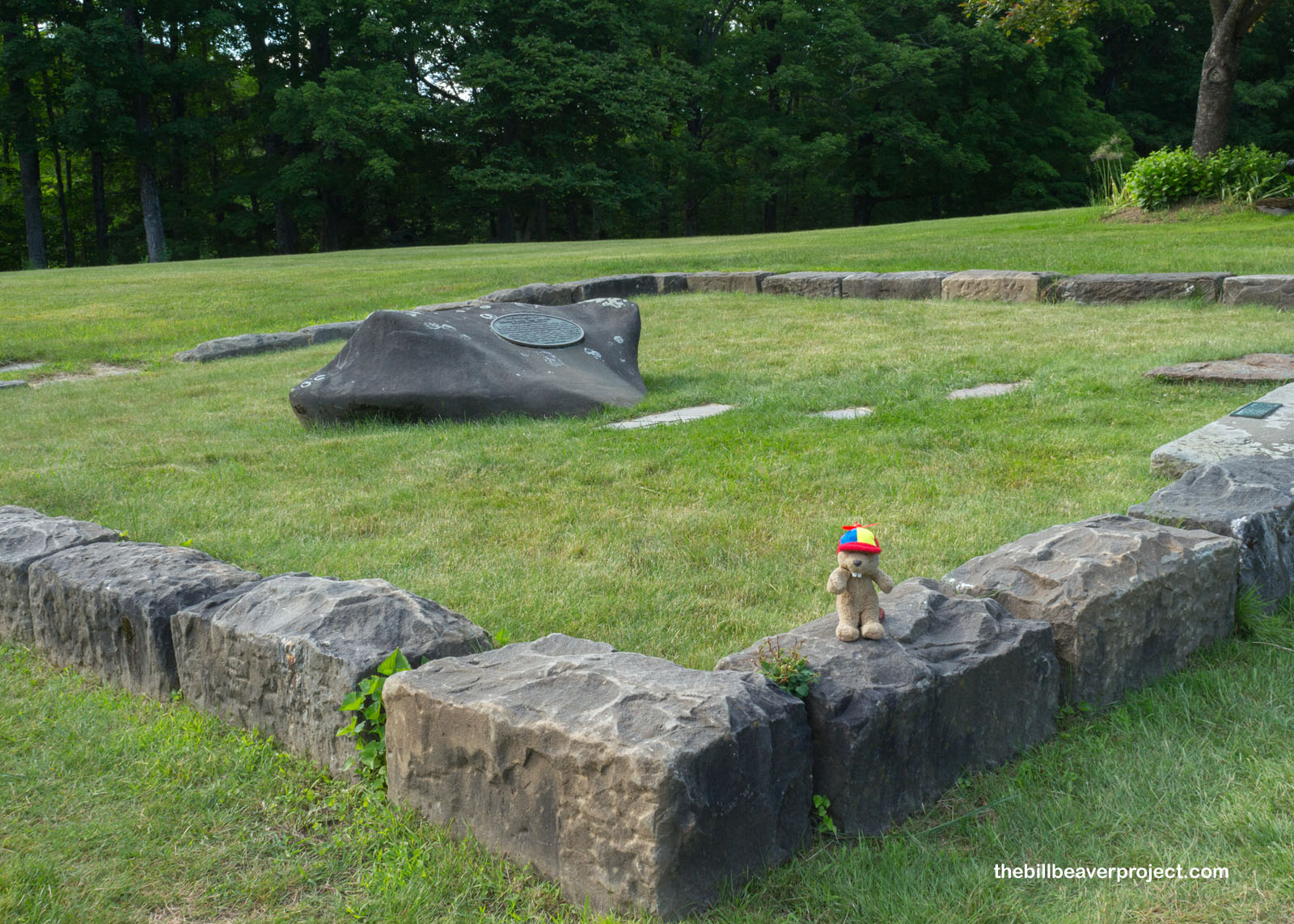 |
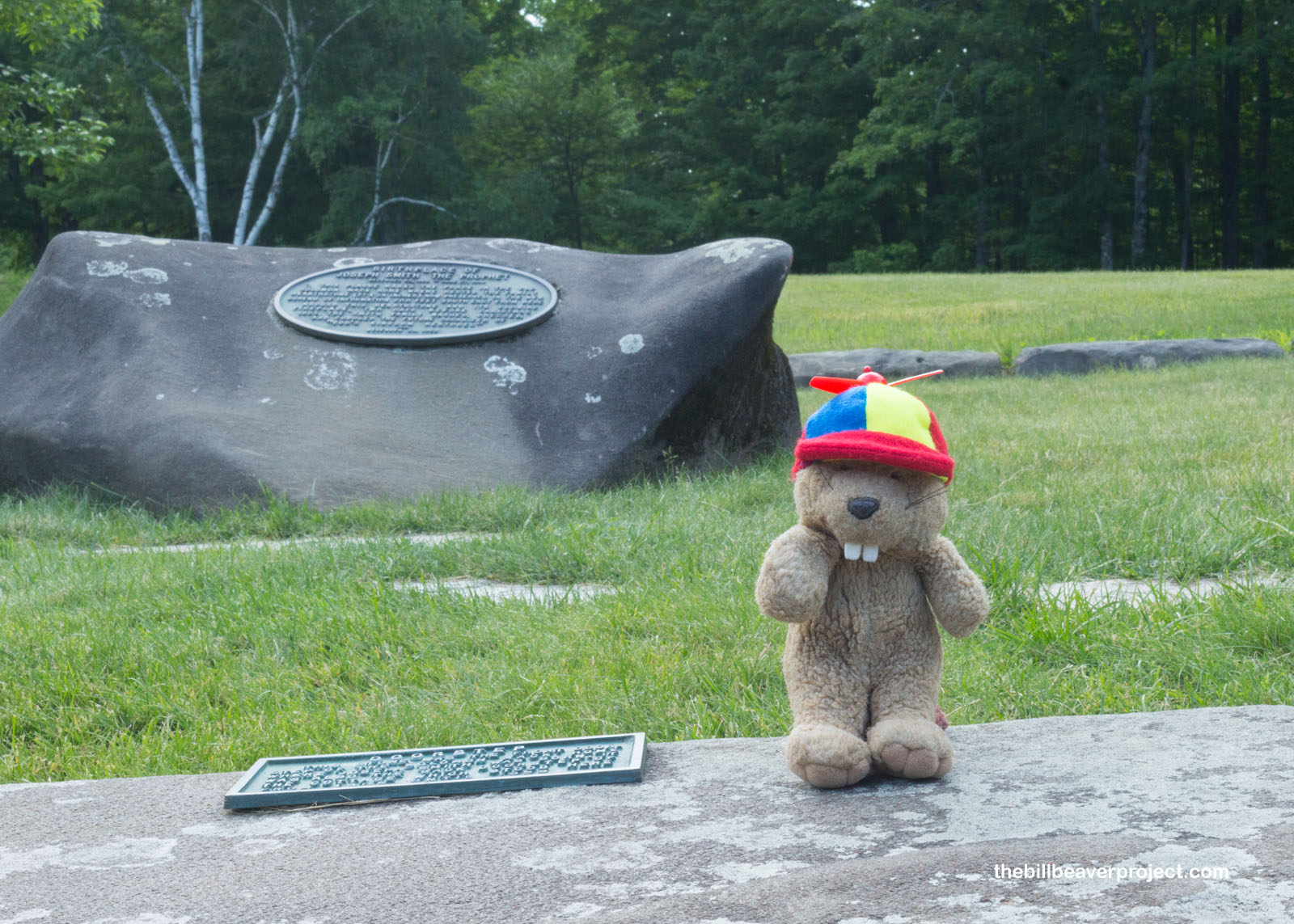 |
And then I made one more hop across state lines to Dartmouth College in Hanover, New Hampshire, alma mater of the doctor who did surgery on Joseph Jr.’s leg! I’d heard about Joseph, Jr.’s involvement with the Freemasons, and I was curious to learn about more local secret societies, starting with the Sphinx and its Tomb! Founded in 1885, this secret senior society is Dartmouth’s oldest, run for both community service and mischief! The members are only known to each other and kept secret, meeting in this Egyptian Revival building until graduation, when each member carries a special cane to reveal himself!
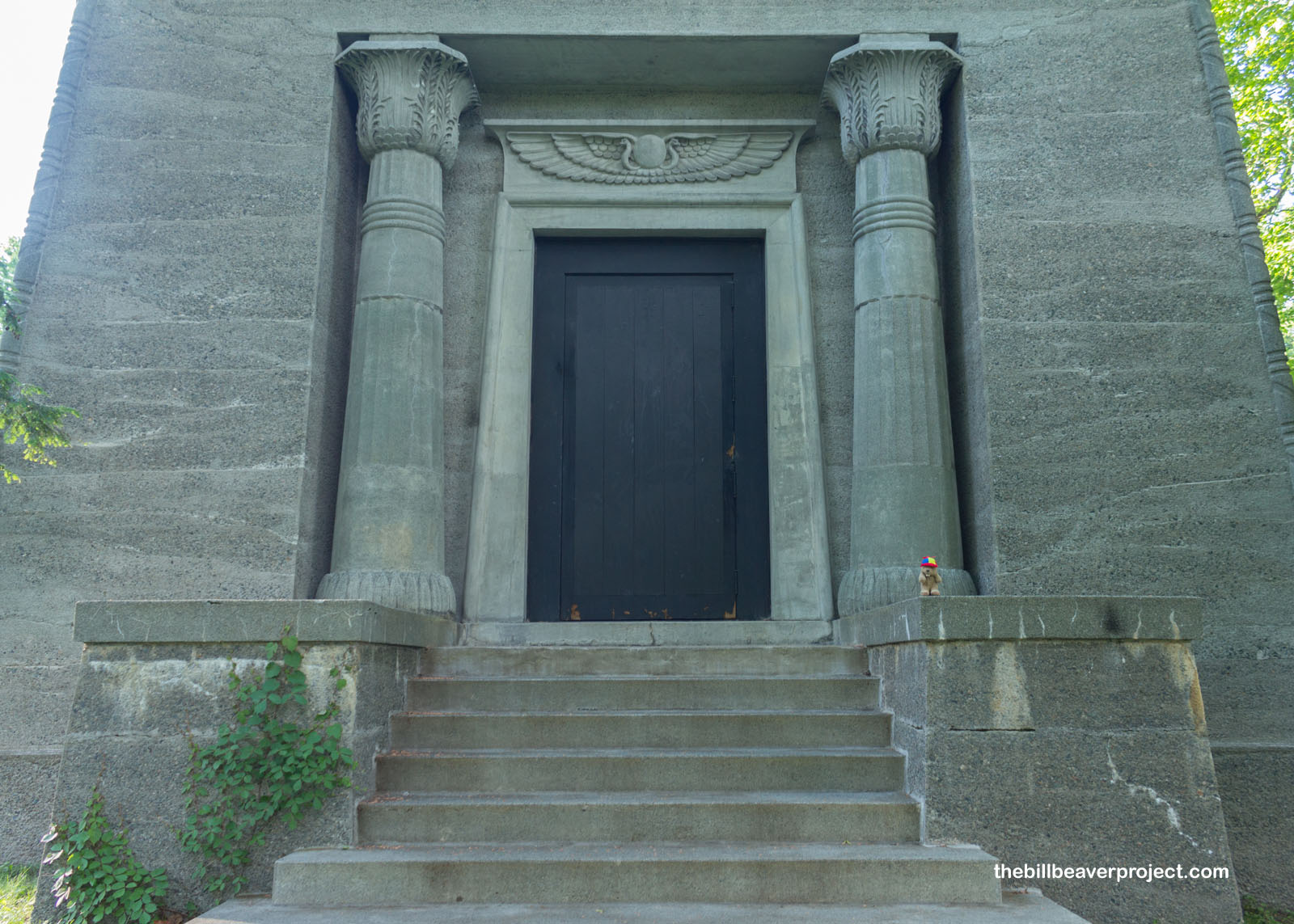 |
I went wandering to find some more evidence of secret societies and passed the Shattuck Observatory, the oldest scientific building on campus, dating back to 1854! It was a gift to the college by Dr. George Shattuck and is mostly used for teaching today!
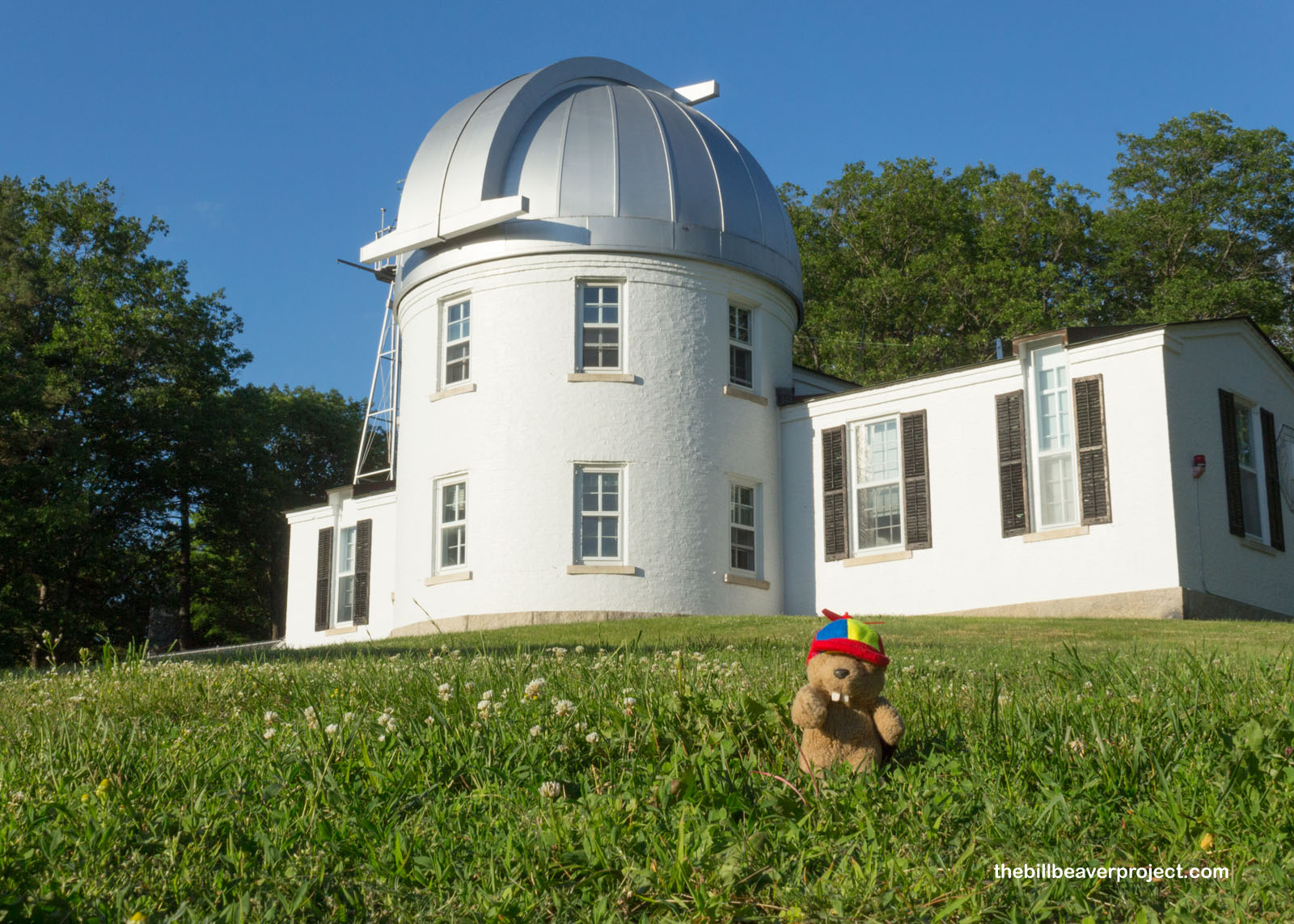 |
Speaking of gifts to the college, the Bartlett Tower and its associated Society honor all folks who include Dartmouth College in their estates! It was built by the Class of 1885 and named for President Samuel Bartlett, a descendant of Josiah Bartlett, who signed the Declaration of Independence! This was despite the Class of 1881 calling for his removal over misconduct! Saved by his wits, President Bartlett added scholarships, pushed the school’s endowment over $1 million, and worked to improve faculty conditions here. One might just call that the pillar of success!
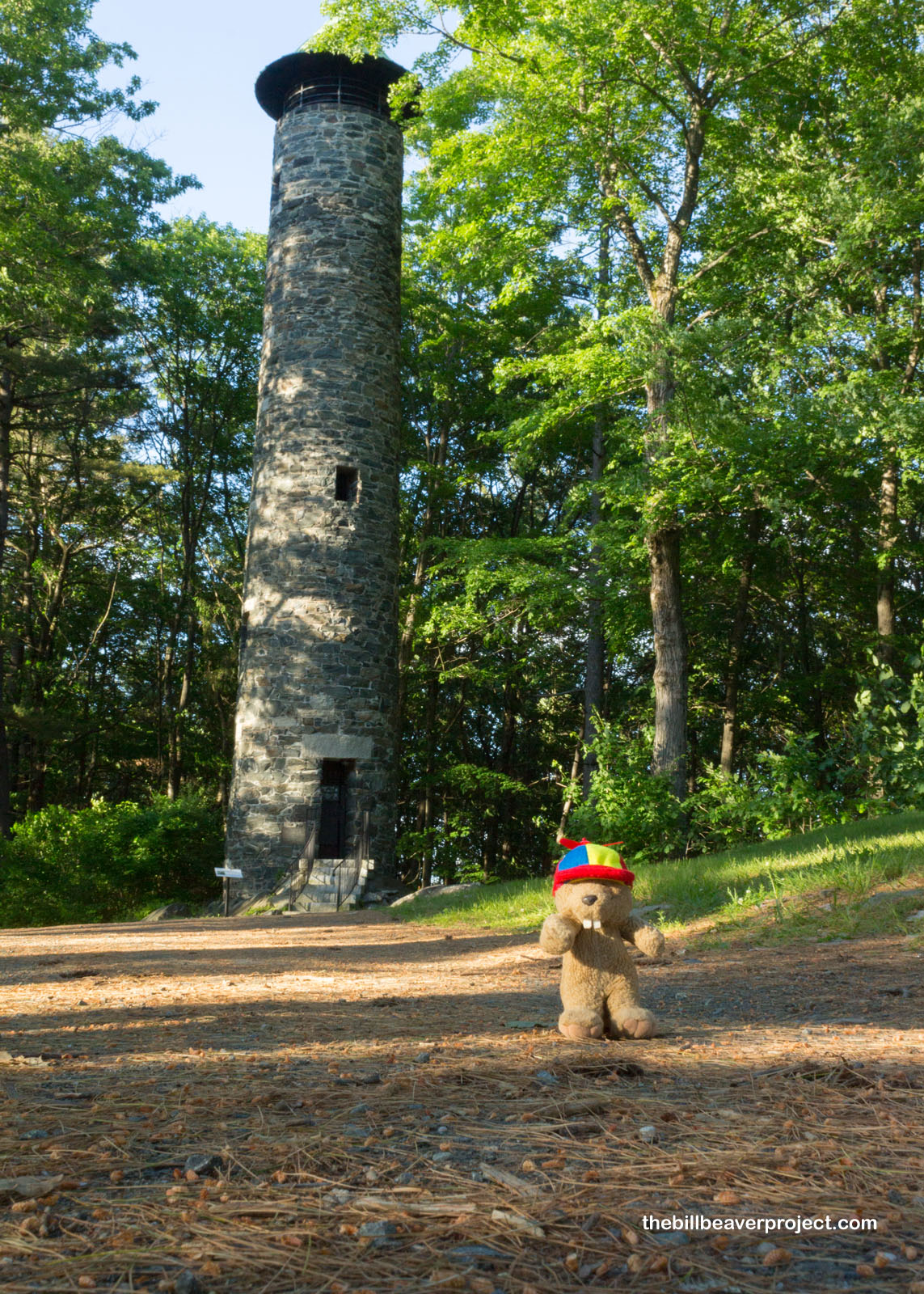 |
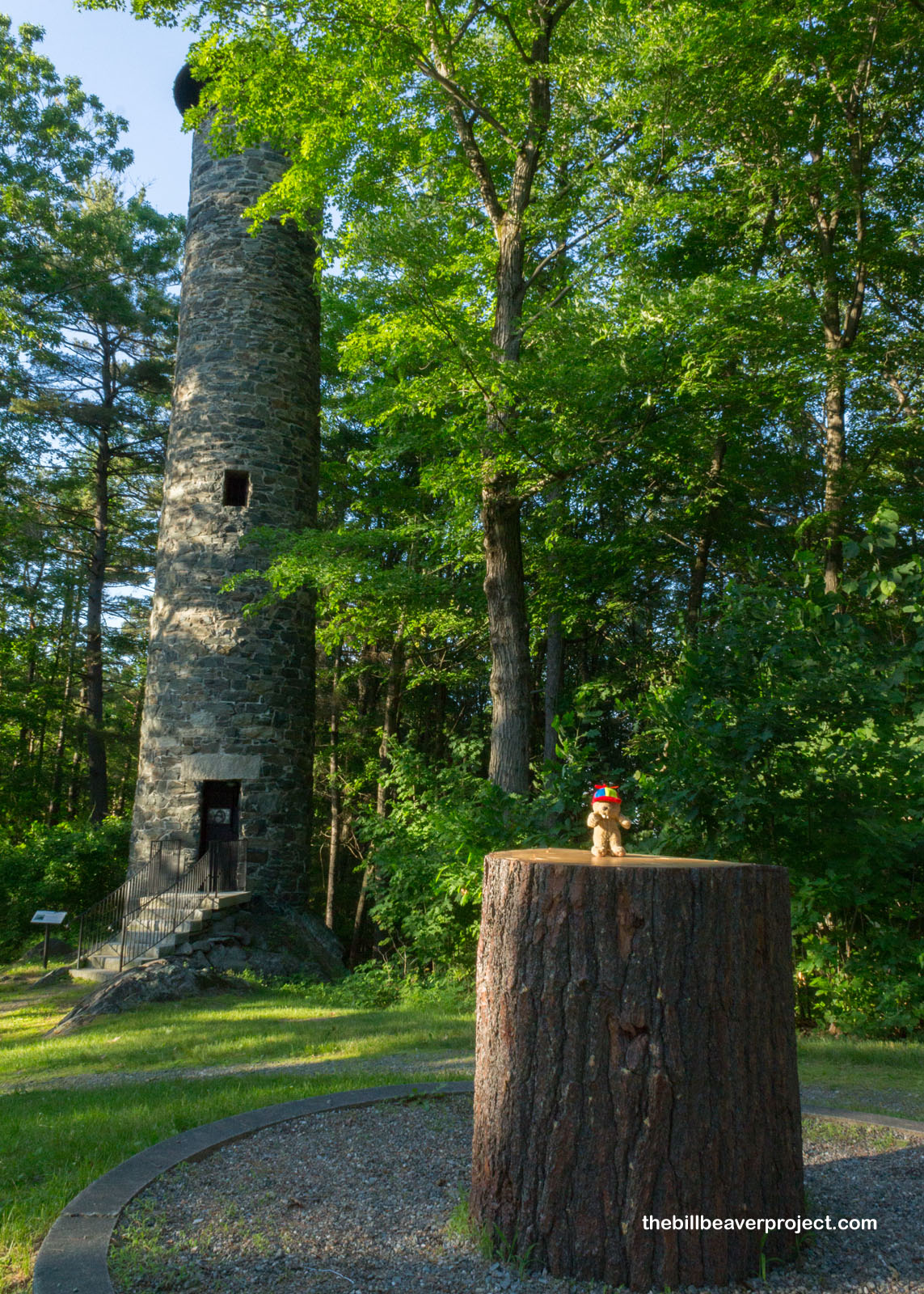 |
A passing white-tailed deer did not find my pun amusing! Really, you go all this time not seeing wildlife on campus, and then they just emerge from the woodwork to heckle you! Yeesh!
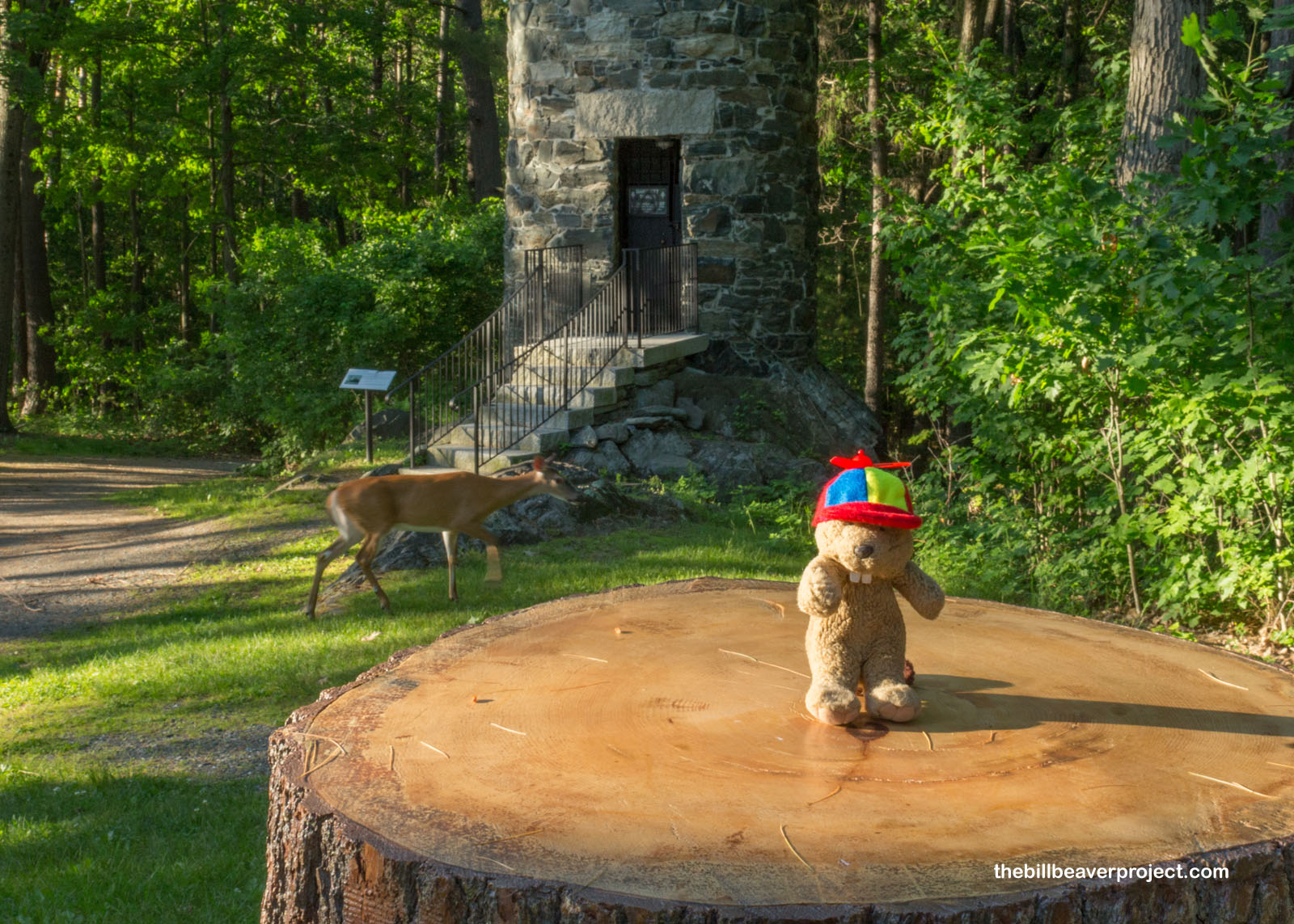 |
Then I stumbled upon a completely unmarked building, known only to members and Google Maps as the Dragon House! Like the Sphinx, the Dragon Society operates in secret, so there’s not much to tell! They “tap” new members during junior year, but unlike the Sphinx, they don’t reveal themselves during graduation, only occasionally on LinkedIn! So how did so many of these secret societies start at Dartmouth? Taking the lead from Yale, these were a blend of social clubs and groups of mostly men who wanted to separate themselves from the “rabble” as individuals of distinction! The Dragon Society claims it was founded over a shared enjoyment of turkey and cider!
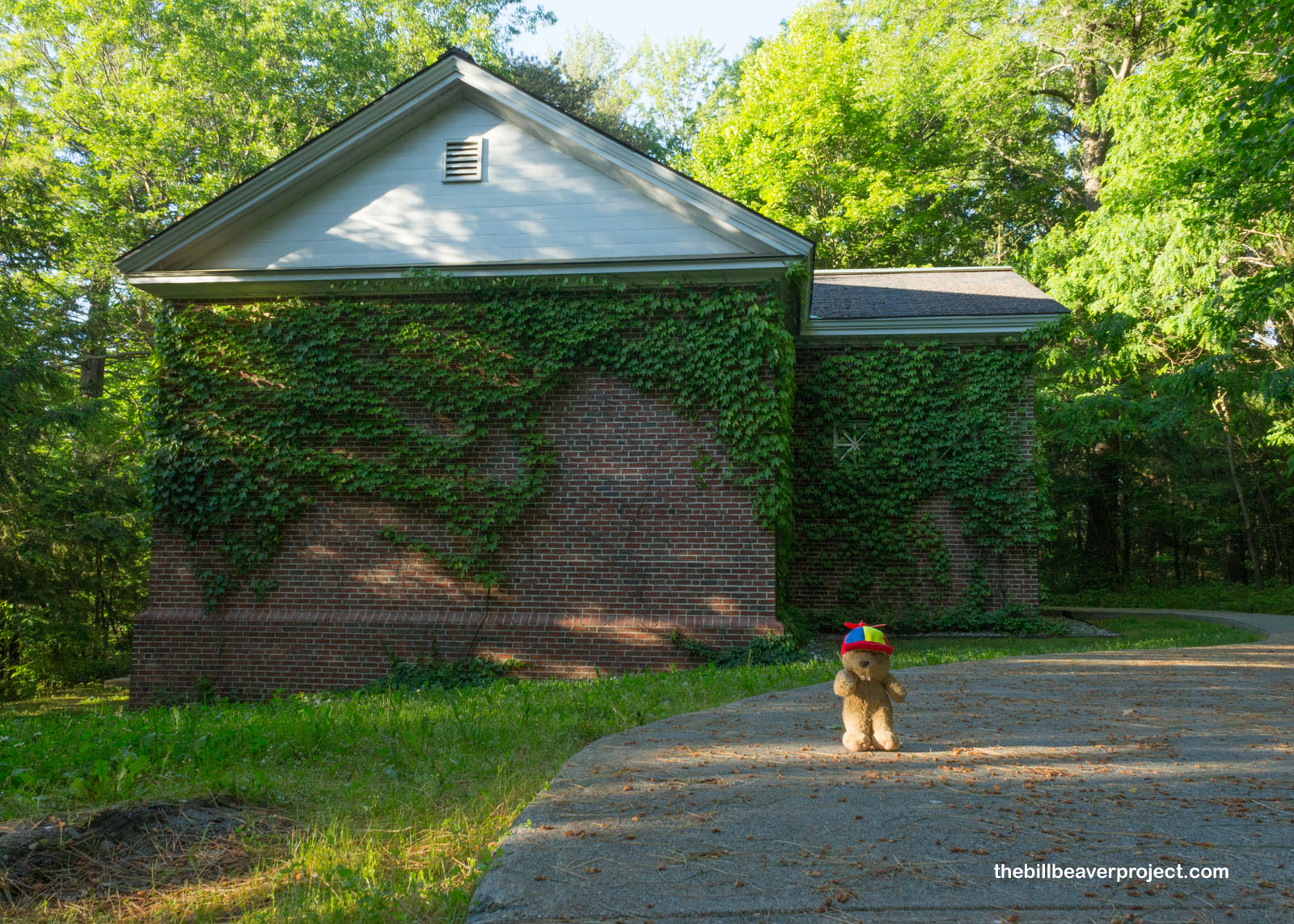 |
Whew! I’ve covered some ground today, even in two small states! As I wandered back out of the trees of Dartmouth, I stopped in these woods on a sunny evening to pay respects to the statue of Robert Frost! Though the famed poet only completed one term at Dartmouth, he taught here from 1943 until 1949 as part of the George Ticknor Fellowship, and today, the Rauner Library houses one of the world’s largest collections of his works!
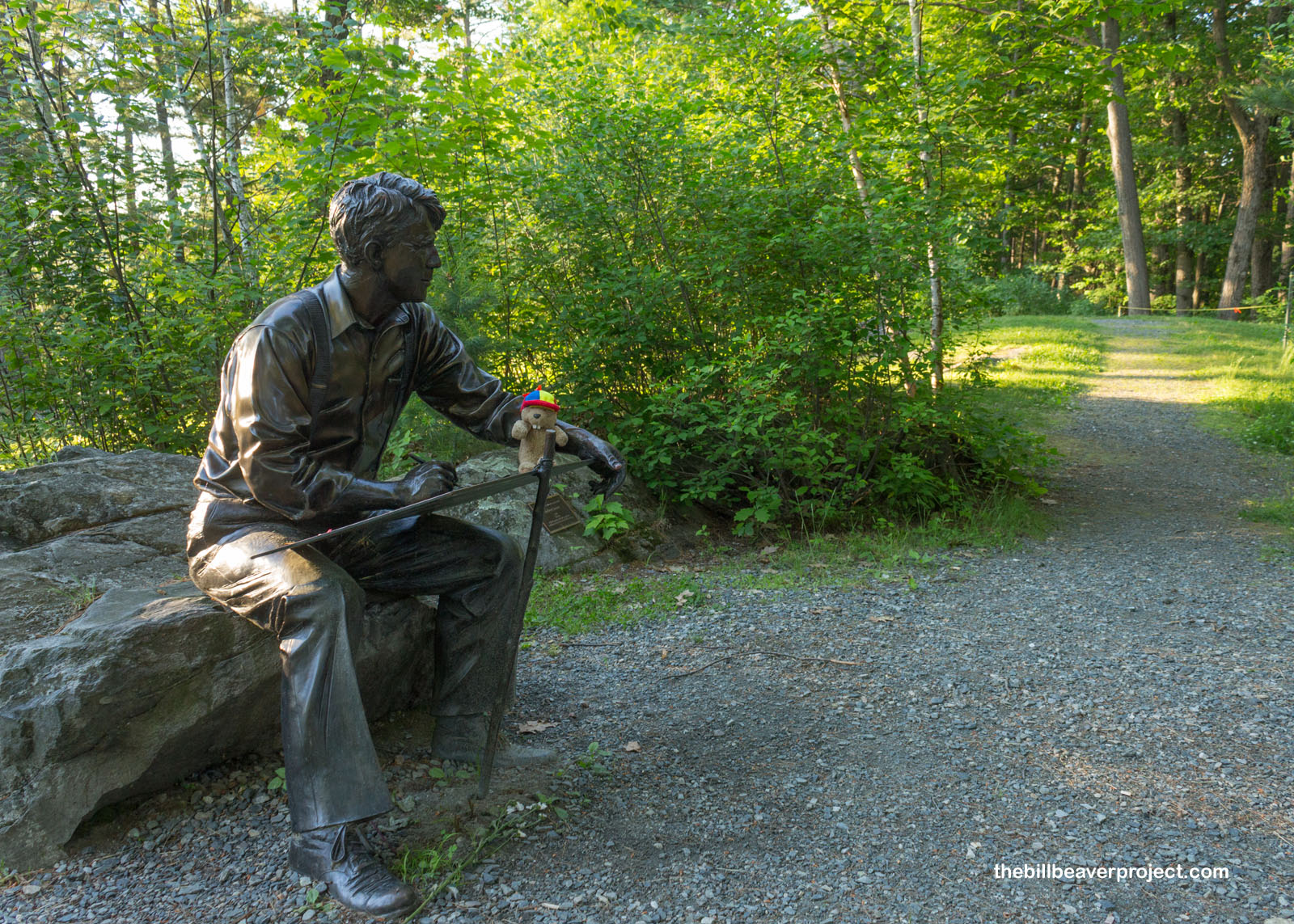 |
And that, folks, was a mad zig-zag from New Hampshire to Vermont and back again, exploring art, ecology, and secrets spanning two small, but rich, states! Tomorrow, I’m off in search of another secretive piece of Vermont ecology, often depicted through art. I hope to spot it on the shores of Lake Champlain!
Darting away!

 Previous Day |
Total Ground Covered: 480.5 mi (773.3 km) |
 Next Day |
